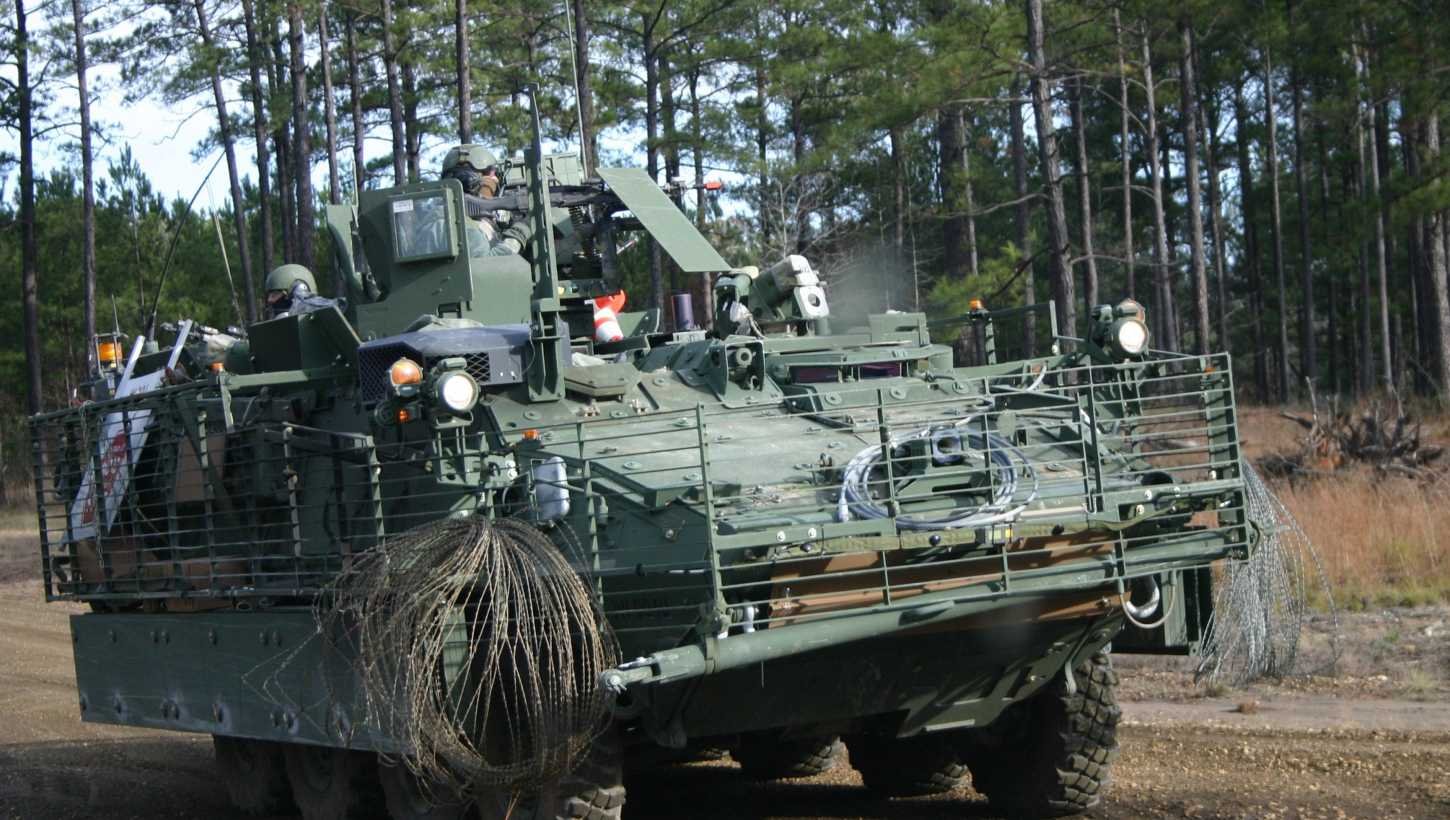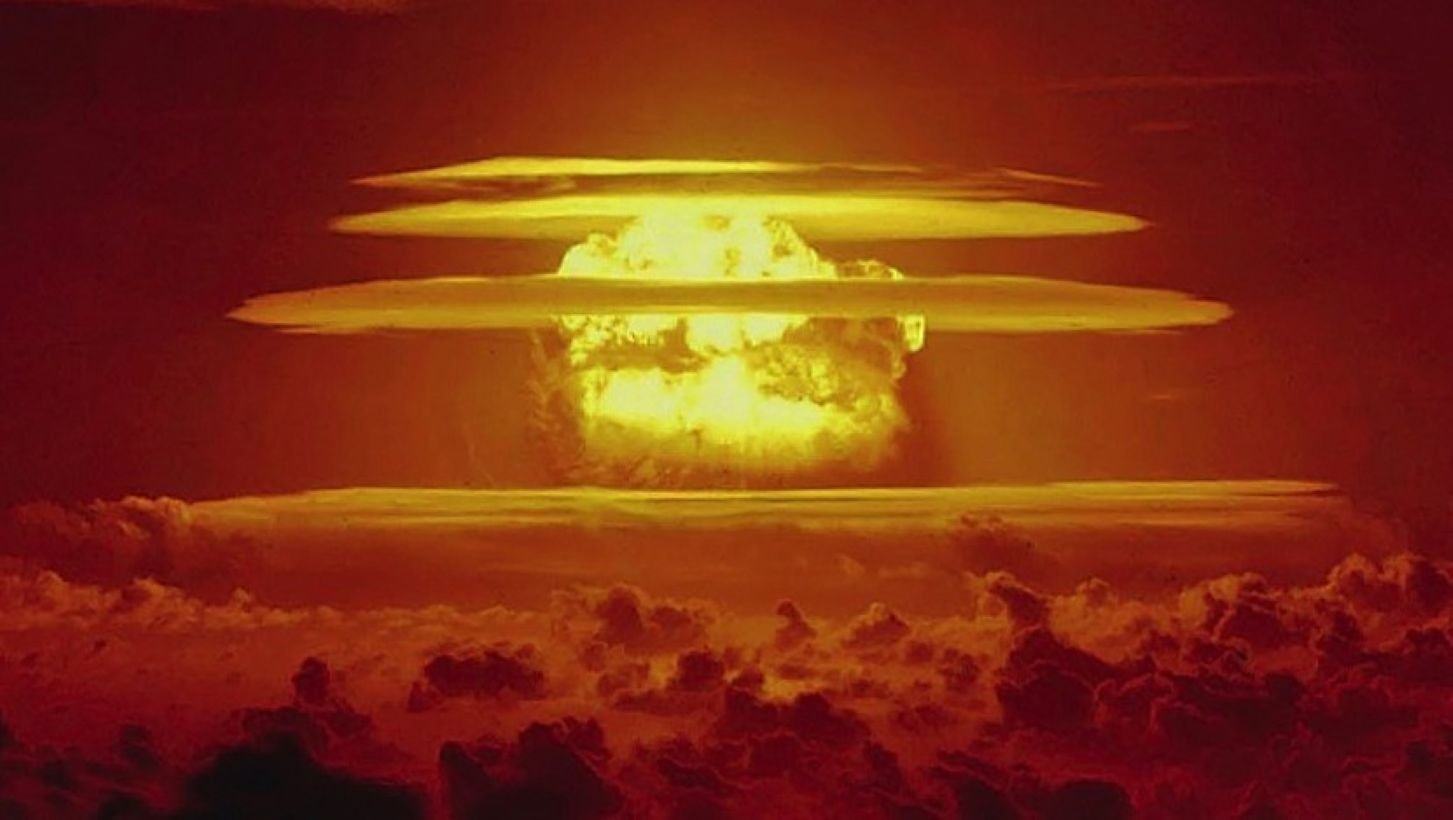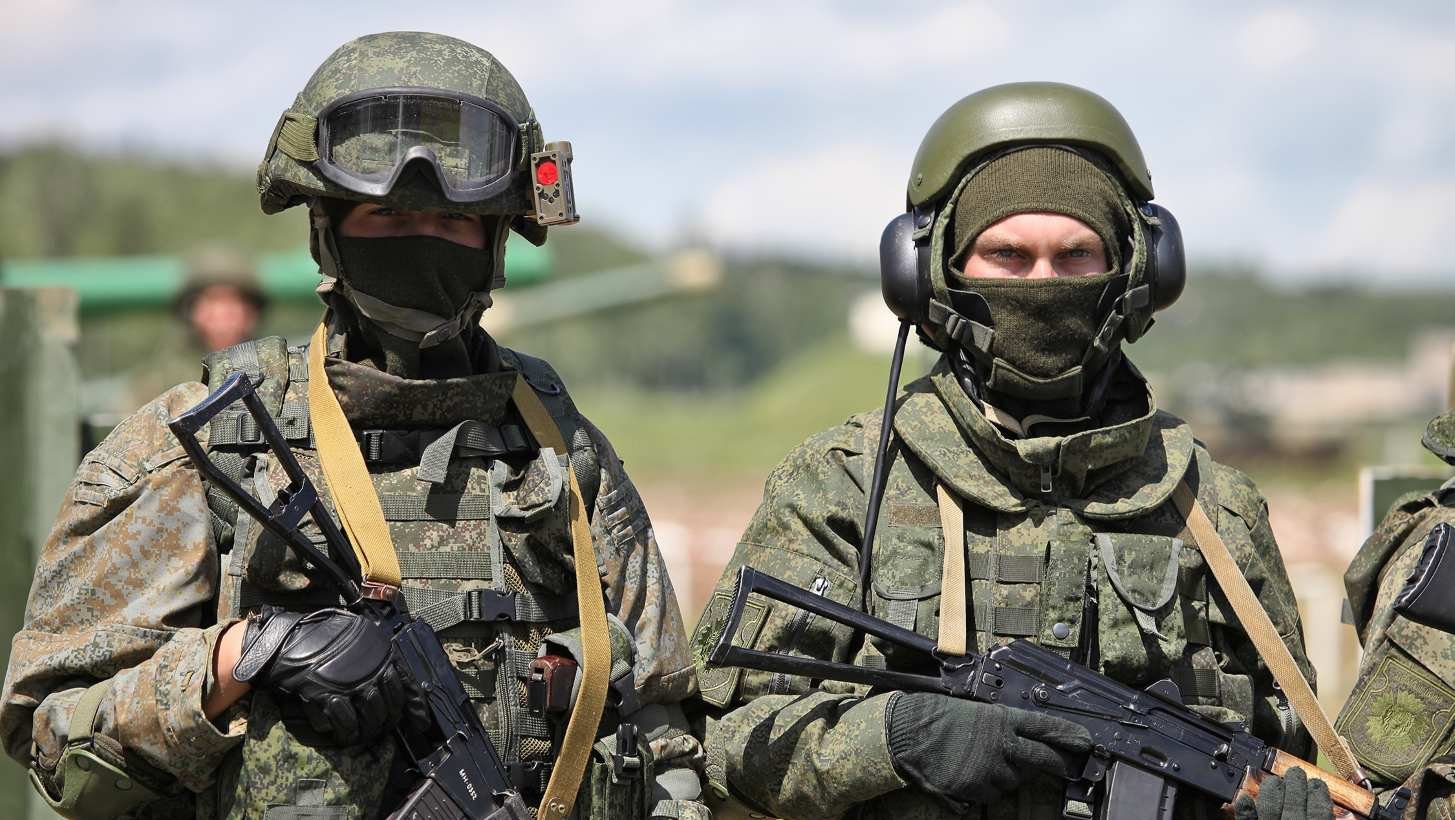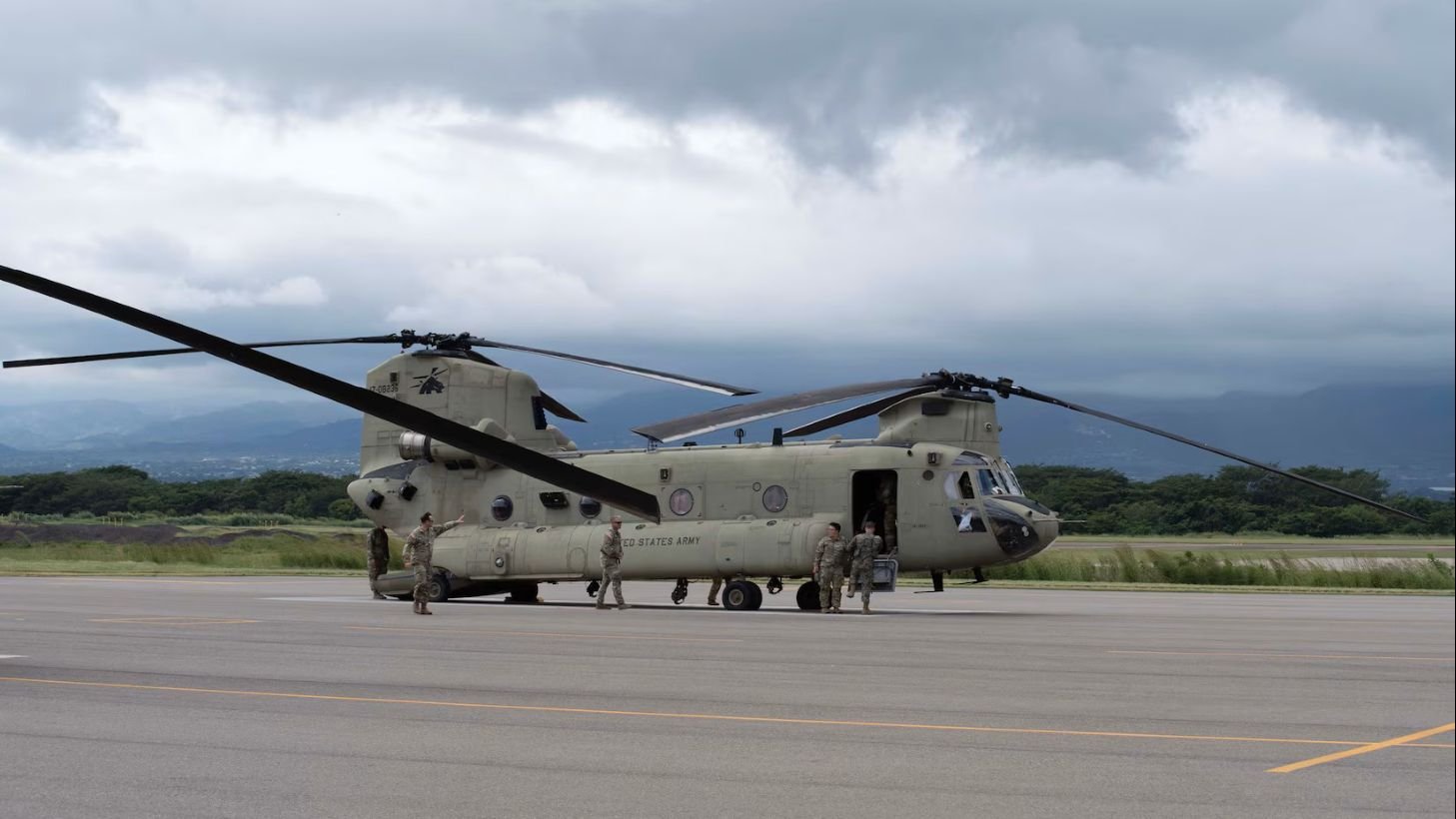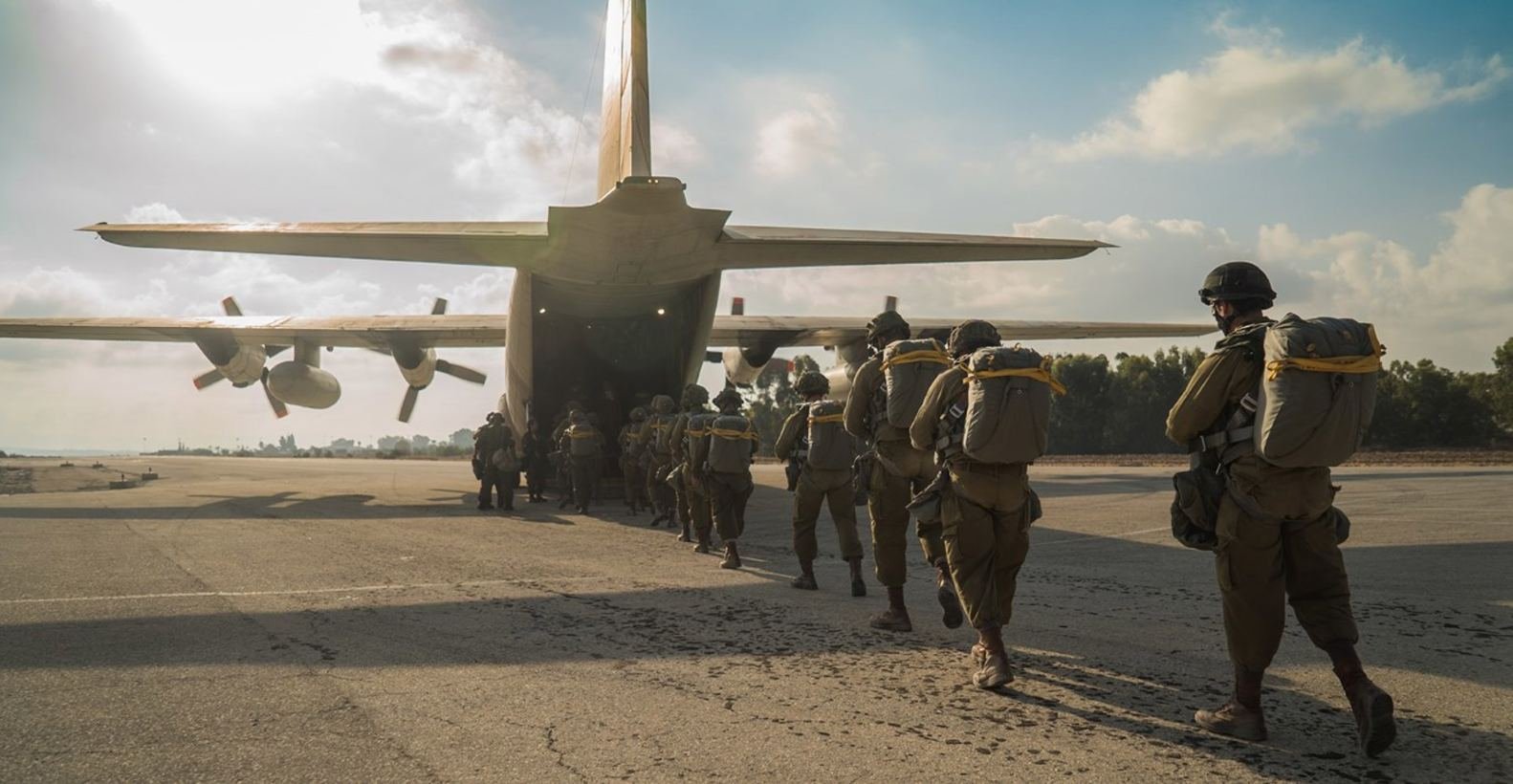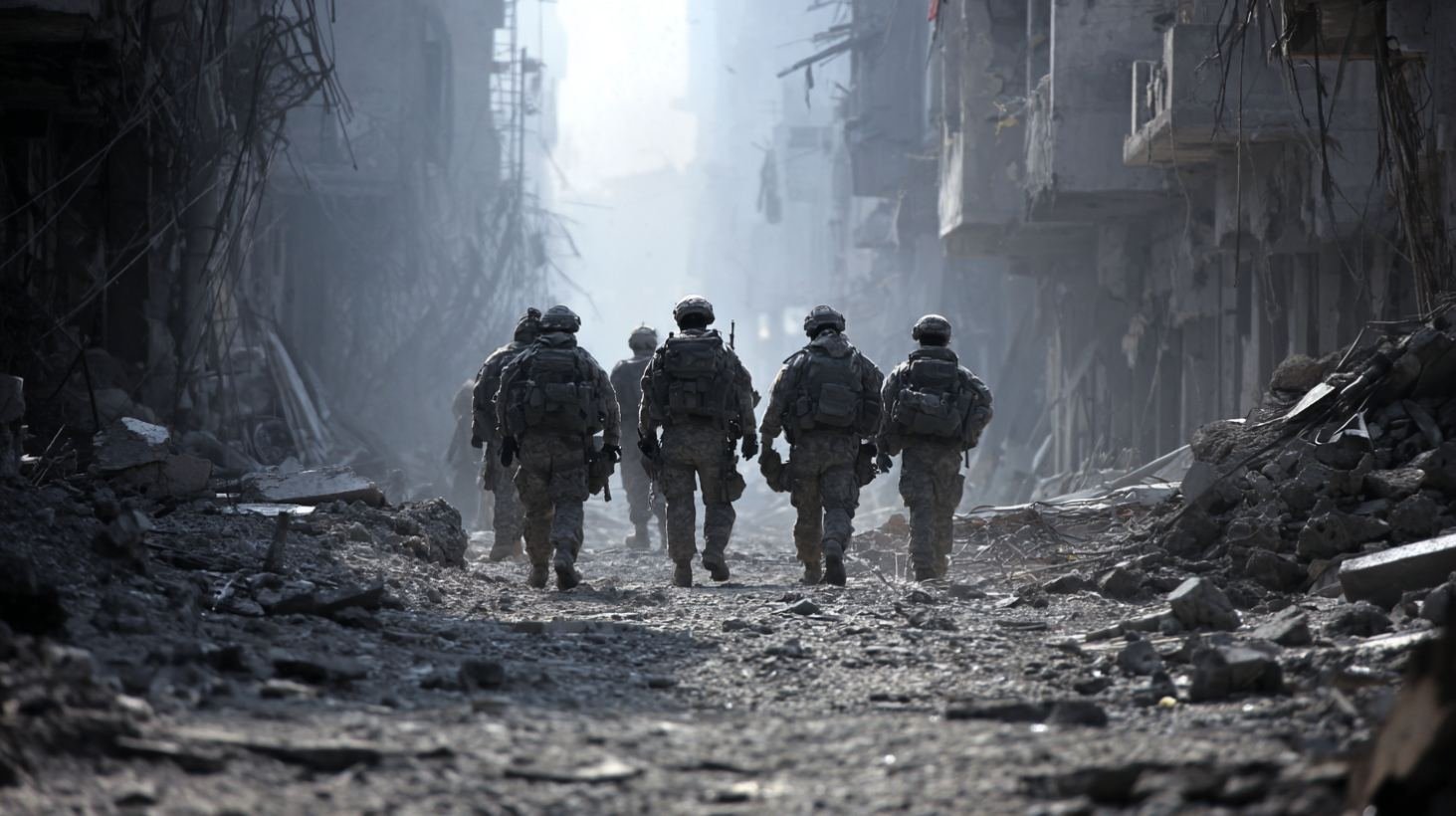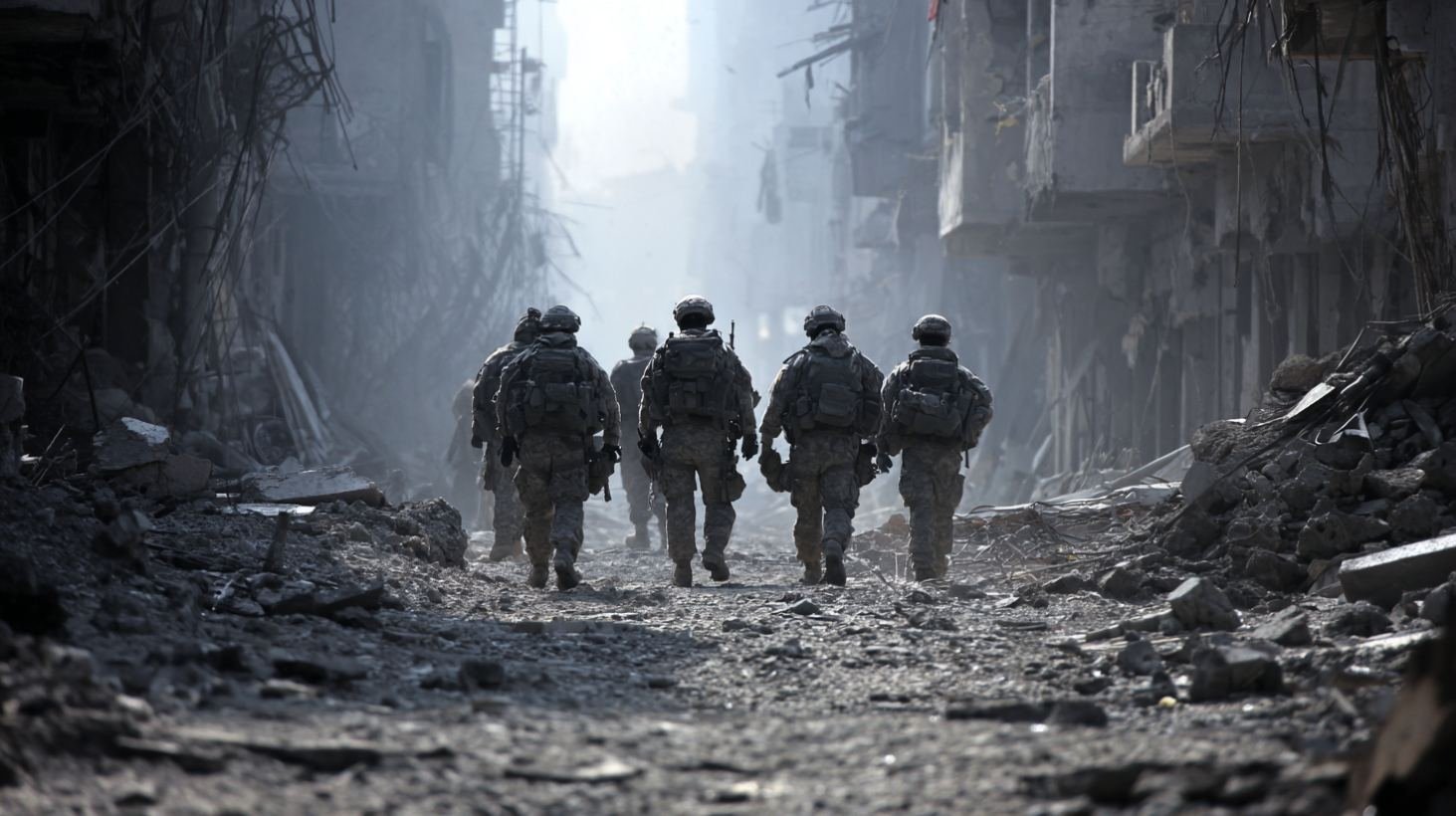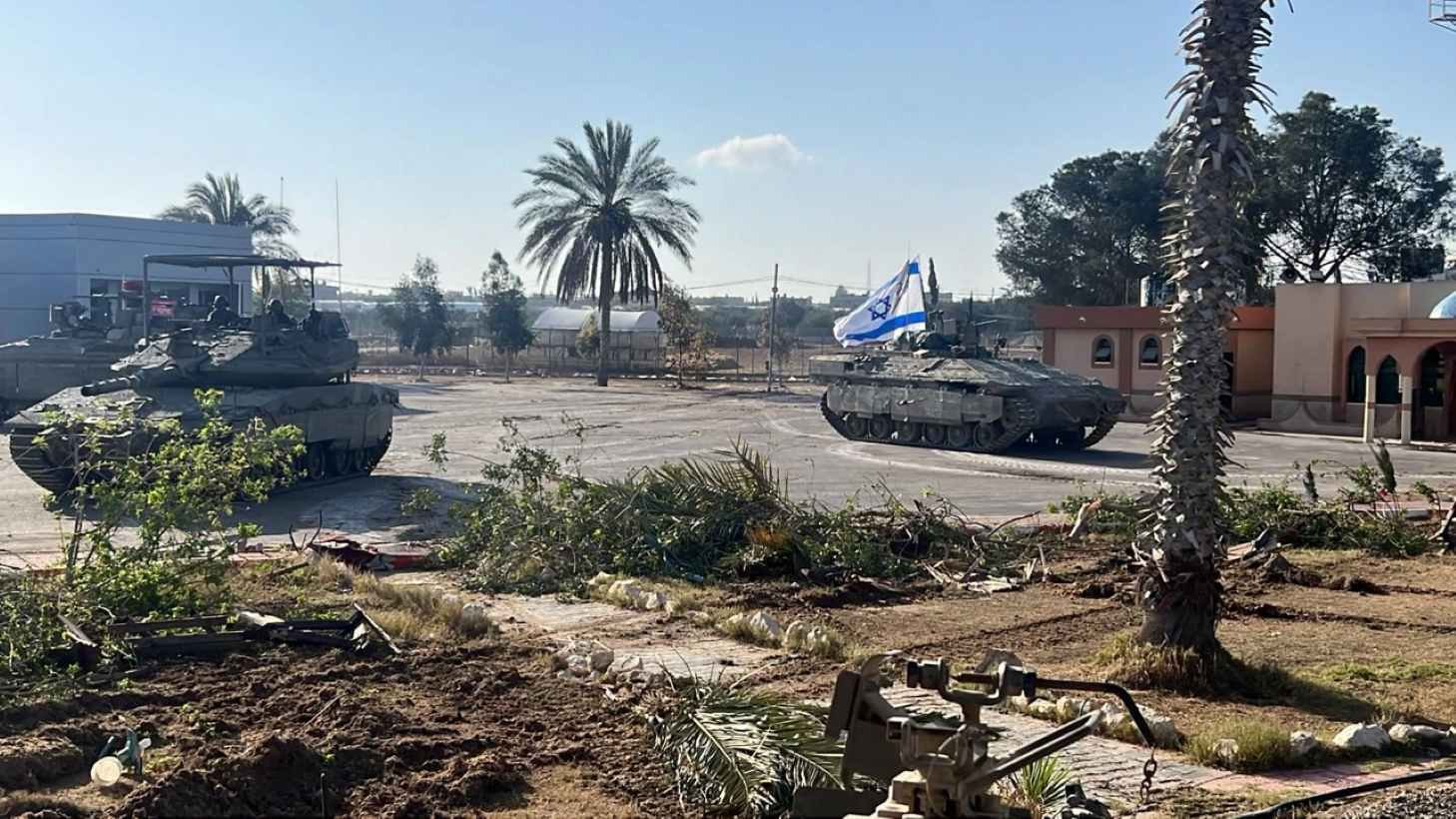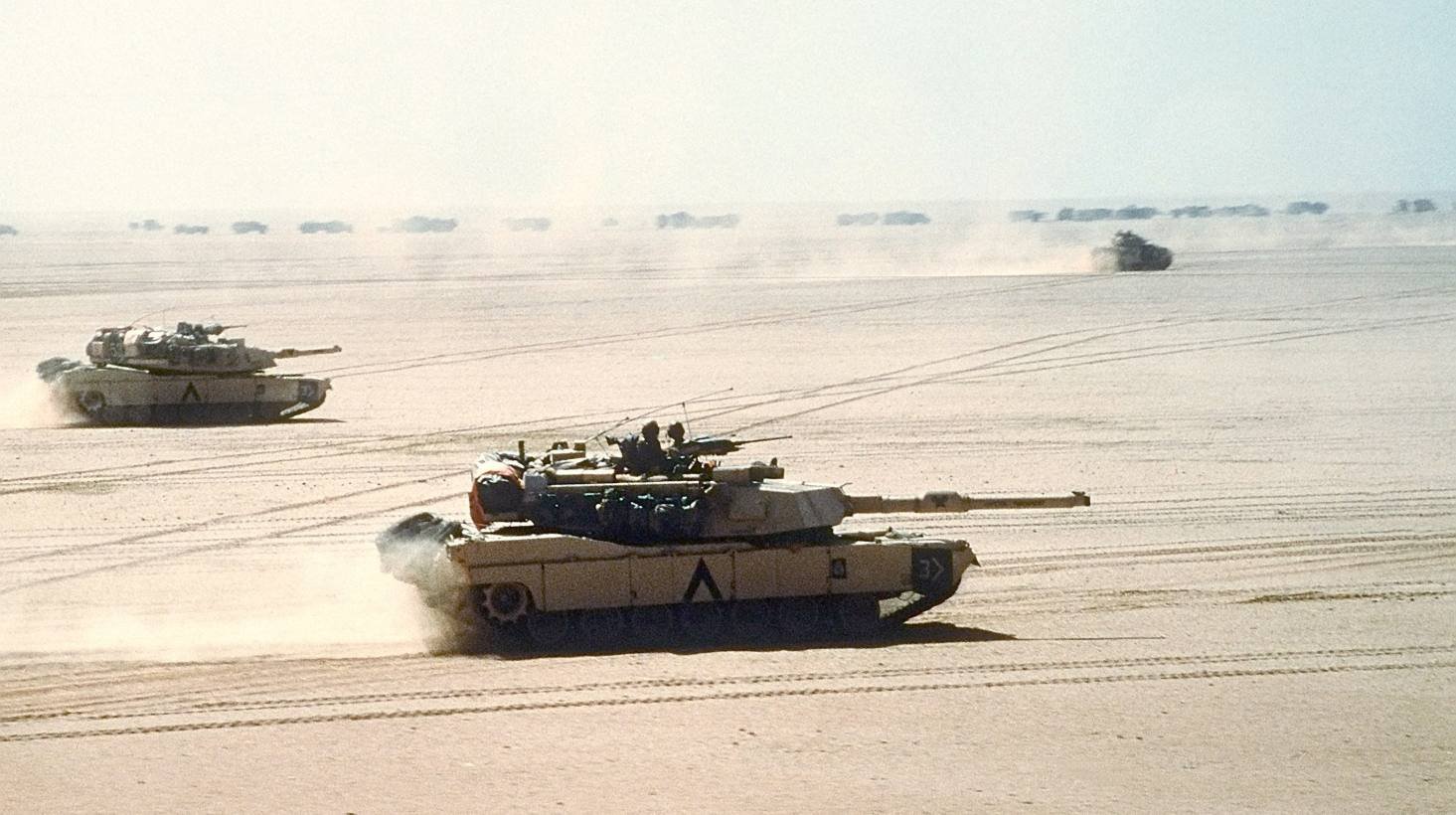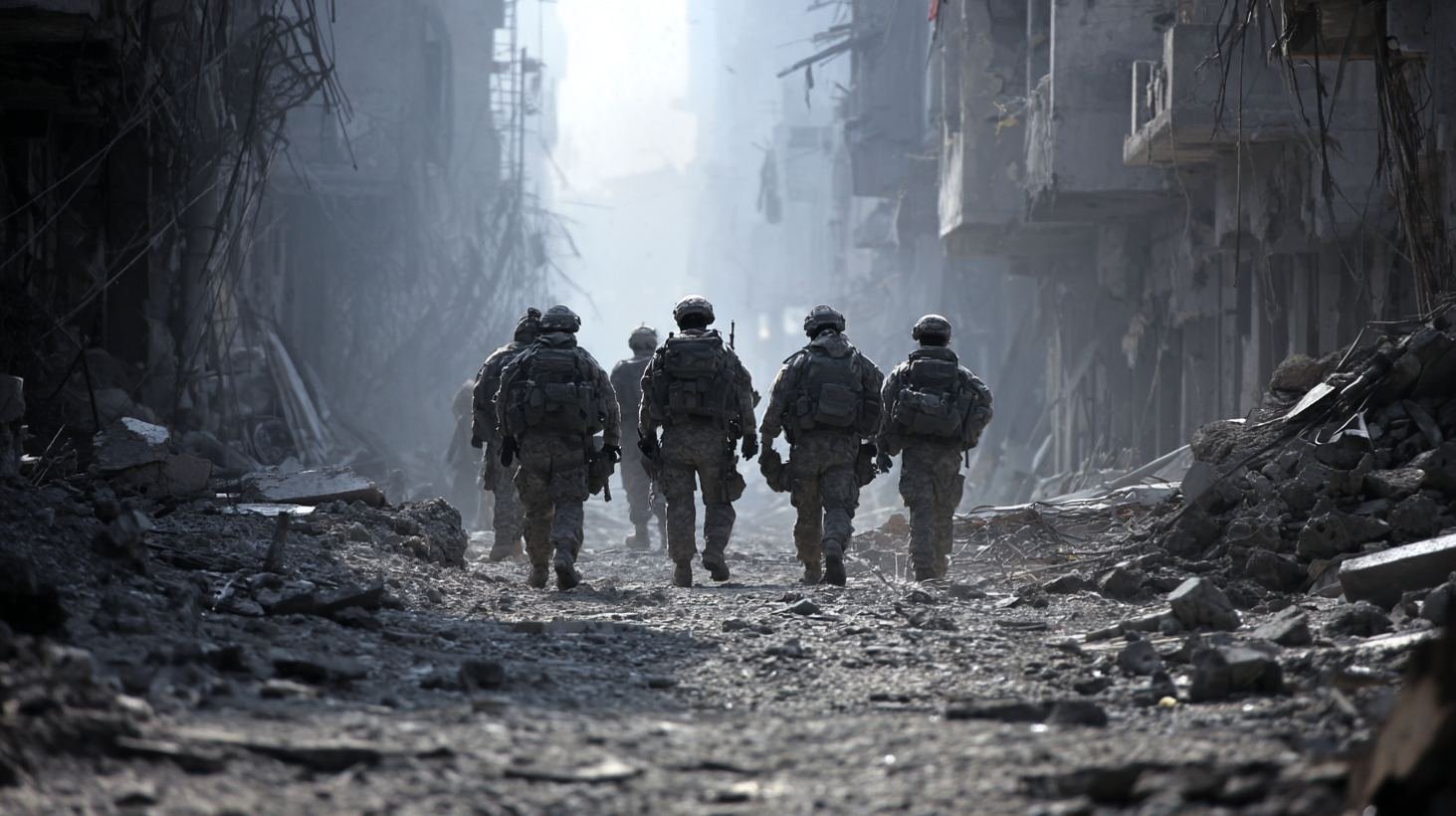-
Posts
790 -
Joined
-
Last visited
Content Type
Profiles
Uncrowned Armory News
Prepping Cookbook
Conspiracy Theories
Uncrowned Tactical Sports News
Prepping
Forums
Events
Everything posted by Uncrowned Guard
-
Intensified Clashes Define Global Conflict Landscape The past week has underscored the persistent volatility of armed confrontations worldwide, as entrenched disputes and emerging battles continued to determine the lives of millions. While major conflicts dominate headlines, significant violence in less-publicized regions persists, often overlooked by the broader international community. Middle East: Stalemates and Humanitarian Crises In the Middle East, the confrontations in Gaza continue to escalate, with both Israeli forces and Palestinian groups reporting casualties amid intensified bombardments and ground operations. Ceasefire proposals remain under negotiation, but recurrent hostilities have prevented tangible progress. The region endures profound humanitarian challenges—aid convoys struggle to enter, hospitals face critical shortages, and civilian displacement numbers rise daily. Elsewhere, Syria’s northwest has witnessed renewed skirmishes between government-affiliated troops and opposition fighters in Idlib province, highlighting the protracted nature of the conflict and the fragility of ongoing truce agreements. Africa: Complexities Beyond the Headlines Sudan has entered another week of acute violence as rival military factions vie for control in populated urban areas such as El Fasher. Alongside mounting civilian casualties and mass displacement, peace talks have failed to broker lasting tranquility. In the Sahel, Burkina Faso and Mali experience frequent attacks by armed groups, with towns beset by insecurity as local militias clash with government and foreign contingents. The Democratic Republic of Congo also remains a flashpoint; the resurgence of the M23 group in the east has prompted hundreds to flee, and regional diplomats warn of potential escalation without stronger intervention. Asia-Pacific: Escalation and Underreported Tensions Renewed fighting was reported between Myanmar’s military junta and ethnic armed groups, particularly in Kachin and Shan states. Local sources indicate that airstrikes on villages have pushed thousands from their homes, compounding an already dire refugee crisis. Meanwhile, in the Philippines, security forces confronted insurgent groups in Mindanao, resulting in episodic firefights and localised disruptions. In the disputed areas of Kashmir, cross-border firing between Indian and Pakistani forces flared after several weeks of calm, prompting concerns of yet another cycle of tit-for-tat engagements. Europe and the Caucasus: Entrenched Battles and Fragile Ceasefires The Russia-Ukraine conflict continues to dominate European security concerns, with heavy fighting concentrated in the Donetsk and Kharkiv regions. Despite recent international diplomatic initiatives, neither side has gained substantial ground, and civilian infrastructure remains at severe risk. Further south, sporadic clashes have reignited tensions between Armenia and Azerbaijan along their shared border, raising fears that progress made after the 2020 Nagorno-Karabakh hostilities could unravel. Americas: Gang Battles and Civic Unrest While not traditional warfare, Haiti’s spiraling gang violence resembles an ongoing conflict, with rival factions engaging in deadly shootouts for territorial control of Port-au-Prince. Attempts by regional organizations to broker peace have seen mixed results, and everyday Haitians are left navigating a perilous environment. Colombia has also faced episodes of violence between government troops and residual armed groups, particularly in the Pacific and border regions, threatening peace accords established in recent years. Conclusion: A Patchwork of Persistent and Overlooked Strife This week’s overview reveals an international tapestry of conflict, both widely publicized and barely reported. While efforts at mediation and aid continue, a common thread emerges: the need for sustained engagement and nuanced understanding of each unique conflict. As global attention is drawn to flashpoints in Ukraine and Gaza, continued coverage and humanitarian action in lesser-known theatres remain urgently required. View full article
-
Intensified Clashes Define Global Conflict Landscape The past week has underscored the persistent volatility of armed confrontations worldwide, as entrenched disputes and emerging battles continued to determine the lives of millions. While major conflicts dominate headlines, significant violence in less-publicized regions persists, often overlooked by the broader international community. Middle East: Stalemates and Humanitarian Crises In the Middle East, the confrontations in Gaza continue to escalate, with both Israeli forces and Palestinian groups reporting casualties amid intensified bombardments and ground operations. Ceasefire proposals remain under negotiation, but recurrent hostilities have prevented tangible progress. The region endures profound humanitarian challenges—aid convoys struggle to enter, hospitals face critical shortages, and civilian displacement numbers rise daily. Elsewhere, Syria’s northwest has witnessed renewed skirmishes between government-affiliated troops and opposition fighters in Idlib province, highlighting the protracted nature of the conflict and the fragility of ongoing truce agreements. Africa: Complexities Beyond the Headlines Sudan has entered another week of acute violence as rival military factions vie for control in populated urban areas such as El Fasher. Alongside mounting civilian casualties and mass displacement, peace talks have failed to broker lasting tranquility. In the Sahel, Burkina Faso and Mali experience frequent attacks by armed groups, with towns beset by insecurity as local militias clash with government and foreign contingents. The Democratic Republic of Congo also remains a flashpoint; the resurgence of the M23 group in the east has prompted hundreds to flee, and regional diplomats warn of potential escalation without stronger intervention. Asia-Pacific: Escalation and Underreported Tensions Renewed fighting was reported between Myanmar’s military junta and ethnic armed groups, particularly in Kachin and Shan states. Local sources indicate that airstrikes on villages have pushed thousands from their homes, compounding an already dire refugee crisis. Meanwhile, in the Philippines, security forces confronted insurgent groups in Mindanao, resulting in episodic firefights and localised disruptions. In the disputed areas of Kashmir, cross-border firing between Indian and Pakistani forces flared after several weeks of calm, prompting concerns of yet another cycle of tit-for-tat engagements. Europe and the Caucasus: Entrenched Battles and Fragile Ceasefires The Russia-Ukraine conflict continues to dominate European security concerns, with heavy fighting concentrated in the Donetsk and Kharkiv regions. Despite recent international diplomatic initiatives, neither side has gained substantial ground, and civilian infrastructure remains at severe risk. Further south, sporadic clashes have reignited tensions between Armenia and Azerbaijan along their shared border, raising fears that progress made after the 2020 Nagorno-Karabakh hostilities could unravel. Americas: Gang Battles and Civic Unrest While not traditional warfare, Haiti’s spiraling gang violence resembles an ongoing conflict, with rival factions engaging in deadly shootouts for territorial control of Port-au-Prince. Attempts by regional organizations to broker peace have seen mixed results, and everyday Haitians are left navigating a perilous environment. Colombia has also faced episodes of violence between government troops and residual armed groups, particularly in the Pacific and border regions, threatening peace accords established in recent years. Conclusion: A Patchwork of Persistent and Overlooked Strife This week’s overview reveals an international tapestry of conflict, both widely publicized and barely reported. While efforts at mediation and aid continue, a common thread emerges: the need for sustained engagement and nuanced understanding of each unique conflict. As global attention is drawn to flashpoints in Ukraine and Gaza, continued coverage and humanitarian action in lesser-known theatres remain urgently required.
-
U.S. Army Unveils New Mobile Brigade Model with Transformation of 81st Stryker Brigade In a strategic pivot toward faster and more adaptable ground forces, the U.S. Army has launched a major overhaul of the Washington-based 81st Stryker Brigade Combat Team, transitioning it into the military’s first Mobile Brigade Combat Team (MBCT). This historic redesign, announced at the end of October 2025, signals a broader shift in Army doctrine amidst evolving threats and complex multi-domain operational environments. Embracing Mobility Over Armor The transformation, centered at Joint Base Lewis-McChord, is ushering out the brigade’s signature Stryker 8x8 armored vehicles, replacing them with Infantry Squad Vehicles (ISVs) engineered through collaboration between GM Defense and Polaris. Unlike the armored Strykers, ISVs are lightweight, unarmored, and optimized for rapid movement and low detectability. The ISV—a nine-passenger tactical vehicle based on the Chevrolet Colorado ZR2 platform—can be swiftly airlifted or sling-loaded by helicopters, giving ground units unmatched flexibility for quick deployments, even in the world’s most austere theaters. Measuring under 2,270 kilograms (5,000 pounds), the ISV’s agility and reach—over 500 kilometers (310 miles) at speeds of more than 110 km/h (68 mph)—make it an ideal asset for terrain where infrastructure is sparse and heavy armor impedes maneuverability. By emphasizing mobility, dispersion, and speed, the Army aims to boost tactical survivability against adversaries equipped with long-range fires and sophisticated reconnaissance. Integrating Robotics and Digital Command The new MBCT structure is not simply about fielding lighter vehicles. It represents a paradigm shift in combined-arms warfare that prioritizes digital integration and autonomous support systems. Plans call for the brigade to operate alongside robotic ground vehicles for logistics and reconnaissance, employ small tactical drones for continuous battlefield awareness, and network sensors to sustain digital connectivity, even in communications-denied environments. These advances are part of the Army’s “Transforming in Contact” doctrine, which tilts the balance away from traditional armor mass toward fast, dispersed formations powered by real-time data fusion and robotic support. As the first unit to implement this approach, the 81st Brigade is set to validate new tactics, experiment with unmanned systems, and refine the operational model for the next generation of Army brigades. Strategic Implications for Global Deployment The MBCT’s rapid-deployment capability aligns closely with contemporary U.S. and NATO defense priorities—particularly in regions like Eastern Europe, the Arctic, and the Indo-Pacific, where the ability to project force quickly can be decisive. Unlike heavy armored brigades, the ISV-equipped unit can be transported via C-130 aircraft and operate with self-sufficiency in environments with limited infrastructure. This flexibility supports fast reinforcement of allies and enables forward deterrence without the substantial logistical footprint of traditional armored forces. A Pioneering Unit at the Forefront of Change The 81st Brigade’s transformation marks its third major organizational evolution since the early 2000s, having previously shifted from an armored to a Stryker brigade before embracing the current mobile combat concept. As the Army’s pilot MBCT, the 81st will play a critical role in shaping future force designs, providing essential feedback on doctrine, technology integration, and operational effectiveness in the field. Redefining Combat for the Modern Battlefield Ultimately, the conversion of the 81st Stryker Brigade reflects the U.S. Army’s commitment to adapting its fighting forces for high-intensity, technologically charged conflicts. In the age of near-peer competitors who wield advanced ISR, electronic warfare, and missile capabilities, speed, agility, and digital proficiency are increasingly vital. The Mobile Brigade Combat Team initiative is set to redefine how the Army maintains its tactical edge—and how U.S. ground forces will fight and survive on tomorrow’s battlefields. View full article
-
- u.s.
- military branches
-
(and 2 more)
Tagged with:
-
U.S. Army Unveils New Mobile Brigade Model with Transformation of 81st Stryker Brigade In a strategic pivot toward faster and more adaptable ground forces, the U.S. Army has launched a major overhaul of the Washington-based 81st Stryker Brigade Combat Team, transitioning it into the military’s first Mobile Brigade Combat Team (MBCT). This historic redesign, announced at the end of October 2025, signals a broader shift in Army doctrine amidst evolving threats and complex multi-domain operational environments. Embracing Mobility Over Armor The transformation, centered at Joint Base Lewis-McChord, is ushering out the brigade’s signature Stryker 8x8 armored vehicles, replacing them with Infantry Squad Vehicles (ISVs) engineered through collaboration between GM Defense and Polaris. Unlike the armored Strykers, ISVs are lightweight, unarmored, and optimized for rapid movement and low detectability. The ISV—a nine-passenger tactical vehicle based on the Chevrolet Colorado ZR2 platform—can be swiftly airlifted or sling-loaded by helicopters, giving ground units unmatched flexibility for quick deployments, even in the world’s most austere theaters. Measuring under 2,270 kilograms (5,000 pounds), the ISV’s agility and reach—over 500 kilometers (310 miles) at speeds of more than 110 km/h (68 mph)—make it an ideal asset for terrain where infrastructure is sparse and heavy armor impedes maneuverability. By emphasizing mobility, dispersion, and speed, the Army aims to boost tactical survivability against adversaries equipped with long-range fires and sophisticated reconnaissance. Integrating Robotics and Digital Command The new MBCT structure is not simply about fielding lighter vehicles. It represents a paradigm shift in combined-arms warfare that prioritizes digital integration and autonomous support systems. Plans call for the brigade to operate alongside robotic ground vehicles for logistics and reconnaissance, employ small tactical drones for continuous battlefield awareness, and network sensors to sustain digital connectivity, even in communications-denied environments. These advances are part of the Army’s “Transforming in Contact” doctrine, which tilts the balance away from traditional armor mass toward fast, dispersed formations powered by real-time data fusion and robotic support. As the first unit to implement this approach, the 81st Brigade is set to validate new tactics, experiment with unmanned systems, and refine the operational model for the next generation of Army brigades. Strategic Implications for Global Deployment The MBCT’s rapid-deployment capability aligns closely with contemporary U.S. and NATO defense priorities—particularly in regions like Eastern Europe, the Arctic, and the Indo-Pacific, where the ability to project force quickly can be decisive. Unlike heavy armored brigades, the ISV-equipped unit can be transported via C-130 aircraft and operate with self-sufficiency in environments with limited infrastructure. This flexibility supports fast reinforcement of allies and enables forward deterrence without the substantial logistical footprint of traditional armored forces. A Pioneering Unit at the Forefront of Change The 81st Brigade’s transformation marks its third major organizational evolution since the early 2000s, having previously shifted from an armored to a Stryker brigade before embracing the current mobile combat concept. As the Army’s pilot MBCT, the 81st will play a critical role in shaping future force designs, providing essential feedback on doctrine, technology integration, and operational effectiveness in the field. Redefining Combat for the Modern Battlefield Ultimately, the conversion of the 81st Stryker Brigade reflects the U.S. Army’s commitment to adapting its fighting forces for high-intensity, technologically charged conflicts. In the age of near-peer competitors who wield advanced ISR, electronic warfare, and missile capabilities, speed, agility, and digital proficiency are increasingly vital. The Mobile Brigade Combat Team initiative is set to redefine how the Army maintains its tactical edge—and how U.S. ground forces will fight and survive on tomorrow’s battlefields.
-
- u.s.
- military branches
-
(and 2 more)
Tagged with:
-
Russia Initiates Formal Preparations for Potential Nuclear Weapons Tests In a pivotal move that echoes the geopolitical tensions of the Cold War era, the Kremlin has instructed a consortium of ministries and agencies to develop concrete proposals for resuming nuclear weapons testing. The directive, issued on November 5, 2025, underscores Russia’s intent to respond in kind should another nuclear power, notably the United States, resume nuclear detonations—a prospect that now looms over global arms control. Strategic Readiness at Novaya Zemlya At the heart of Russia’s preparations is Novaya Zemlya, the historic Arctic test site synonymous with Soviet-era nuclear experimentation. Defense Minister Andrei Belousov, addressing the Russian Security Council, cited the site’s high operational readiness and noted that the infrastructure could be activated with minimal notice. Such readiness supports a flexible spectrum of testing activities, from subcritical, zero-yield experiments to assess modern warhead components to fully contained underground tests of updated missile systems. This dual-capability posture, officials stress, is designed to mirror any shift in U.S. policy and serves as a warning that Russia stands ready to re-enter the nuclear testing arena should global moratoria erode. Modernization and Technical Benchmarks While emphasizing a reactive strategy, Moscow’s technical ambitions go beyond mere demonstration. Should nuclear testing resume, initial Russian efforts are likely to focus on subcritical experiments—critical for stockpile maintenance and warhead modernization without violating the threshold of explosive yield. Such diagnostics would stress-test plutonium pits and validate novel components, shoring up Russia’s deterrent while remaining technically and politically distinct from overt detonations. Further escalation could see Russia advance to low-yield, fully contained underground shots to credential new or refurbished warhead designs. Weapon systems under scrutiny could include reentry vehicles for silo- and mobile-launched ICBMs (such as Yars and Sarmat), submarine-launched missiles like Bulava, and advanced hypersonic platforms such as Avangard. Analogous attention may be given to Russia’s tactical arsenal, with testing scenarios designed to validate emerging, lower-yield options for adaptable, regional deterrence. Spotlight on “Exotic” Nuclear Capabilities Recent official statements have also amplified Russia’s focus on unconventional weaponry. High-profile programs such as the 9M730 Burevestnik nuclear-powered cruise missile and the Poseidon underwater nuclear vehicle are framed as strategic counterweights to Western missile defenses. While these categories do not currently require explosive testing to further non-nuclear aspects of their development, any decision to validate their warhead designs might necessitate uniquely tailored underground detonations, complicating detection, attribution, and arms control verification efforts. Evolving Legal and Political Calculus The immediate impetus for Russia’s renewed preparations stems from intensifying U.S. rhetoric. Public remarks from former President Donald Trump regarding the possible resumption of American nuclear testing, along with subsequent equivocations, have been met with apprehension in Moscow. Russia, which formally de-ratified the Comprehensive Nuclear-Test-Ban Treaty (CTBT) in 2023, has sought to establish “parity” with the United States—a signatory that never ratified the treaty. This legal maneuvering, coupled with the Kremlin’s insistence that its own testing would only follow external precedent, is reshaping the strategic landscape. Global Security Implications Russia’s consolidation of political will and technical readiness signals a moment of heightened vulnerability for international nuclear norms. Should one nuclear state reignite testing, there is a pronounced risk of a cascading destabilization of the arms control regime. The world now faces the uncomfortable prospect that nuclear risk, long managed through restraint and verification, may once again dominate security calculations. Allied reassurance, diplomatic crisis management, and global nonproliferation efforts now hang in the balance, as a new phase of strategic competition threatens to emerge. View full article
-
- news
- military news
-
(and 2 more)
Tagged with:
-
Russia Initiates Formal Preparations for Potential Nuclear Weapons Tests In a pivotal move that echoes the geopolitical tensions of the Cold War era, the Kremlin has instructed a consortium of ministries and agencies to develop concrete proposals for resuming nuclear weapons testing. The directive, issued on November 5, 2025, underscores Russia’s intent to respond in kind should another nuclear power, notably the United States, resume nuclear detonations—a prospect that now looms over global arms control. Strategic Readiness at Novaya Zemlya At the heart of Russia’s preparations is Novaya Zemlya, the historic Arctic test site synonymous with Soviet-era nuclear experimentation. Defense Minister Andrei Belousov, addressing the Russian Security Council, cited the site’s high operational readiness and noted that the infrastructure could be activated with minimal notice. Such readiness supports a flexible spectrum of testing activities, from subcritical, zero-yield experiments to assess modern warhead components to fully contained underground tests of updated missile systems. This dual-capability posture, officials stress, is designed to mirror any shift in U.S. policy and serves as a warning that Russia stands ready to re-enter the nuclear testing arena should global moratoria erode. Modernization and Technical Benchmarks While emphasizing a reactive strategy, Moscow’s technical ambitions go beyond mere demonstration. Should nuclear testing resume, initial Russian efforts are likely to focus on subcritical experiments—critical for stockpile maintenance and warhead modernization without violating the threshold of explosive yield. Such diagnostics would stress-test plutonium pits and validate novel components, shoring up Russia’s deterrent while remaining technically and politically distinct from overt detonations. Further escalation could see Russia advance to low-yield, fully contained underground shots to credential new or refurbished warhead designs. Weapon systems under scrutiny could include reentry vehicles for silo- and mobile-launched ICBMs (such as Yars and Sarmat), submarine-launched missiles like Bulava, and advanced hypersonic platforms such as Avangard. Analogous attention may be given to Russia’s tactical arsenal, with testing scenarios designed to validate emerging, lower-yield options for adaptable, regional deterrence. Spotlight on “Exotic” Nuclear Capabilities Recent official statements have also amplified Russia’s focus on unconventional weaponry. High-profile programs such as the 9M730 Burevestnik nuclear-powered cruise missile and the Poseidon underwater nuclear vehicle are framed as strategic counterweights to Western missile defenses. While these categories do not currently require explosive testing to further non-nuclear aspects of their development, any decision to validate their warhead designs might necessitate uniquely tailored underground detonations, complicating detection, attribution, and arms control verification efforts. Evolving Legal and Political Calculus The immediate impetus for Russia’s renewed preparations stems from intensifying U.S. rhetoric. Public remarks from former President Donald Trump regarding the possible resumption of American nuclear testing, along with subsequent equivocations, have been met with apprehension in Moscow. Russia, which formally de-ratified the Comprehensive Nuclear-Test-Ban Treaty (CTBT) in 2023, has sought to establish “parity” with the United States—a signatory that never ratified the treaty. This legal maneuvering, coupled with the Kremlin’s insistence that its own testing would only follow external precedent, is reshaping the strategic landscape. Global Security Implications Russia’s consolidation of political will and technical readiness signals a moment of heightened vulnerability for international nuclear norms. Should one nuclear state reignite testing, there is a pronounced risk of a cascading destabilization of the arms control regime. The world now faces the uncomfortable prospect that nuclear risk, long managed through restraint and verification, may once again dominate security calculations. Allied reassurance, diplomatic crisis management, and global nonproliferation efforts now hang in the balance, as a new phase of strategic competition threatens to emerge.
-
- news
- military news
-
(and 2 more)
Tagged with:
-
Russia Overhauls Military Draft System with Year-Round Conscription President Vladimir Putin has enacted a landmark shift in Russia’s conscription policy, signing a law on November 4 that transitions the country from a biannual draft system to continuous, year-round conscription starting in 2026. The new directive, published on Russia’s legal acts portal, reflects a strategic pivot in how Moscow manages its military manpower amid ongoing conflict and shifting geopolitical pressures. Transition from Seasonal Drafts to Full-Year Enlistment For decades, Russia’s conscription model relied on two annual intake periods — in the spring and autumn — pulling young men into one year of compulsory military service. Under the new framework, while new recruits will continue to join the armed forces during the familiar draft windows (April 1–July 15 and October 1–December 31), the supporting infrastructure will operate throughout the year. Draft boards and medical commissions at military enlistment offices will now process potential conscripts continuously, aiming to streamline and modernize the draft process. Andrei Kartapolov, the chair of Russia’s parliamentary Defense Committee and the architect of the reform, argued that the measure is designed to reduce administrative bottlenecks for regional military commissariats and ensure more consistent preparation of new recruits. Conscription Amid Ongoing Conflict and Changing Recruitment Tactics Although Russian law ostensibly prohibits deploying conscripted soldiers beyond national borders, independent reports continue to surface suggesting that many young draftees are pressured into signing contracts with the Defense Ministry. These contractual obligations effectively convert them into professional contract soldiers, enabling deployment to hotspots such as Ukraine. This reform arrives in the shadow of the 2022 mass mobilization: a historic draft which, for the first time since World War II, called up hundreds of thousands of reservists to address setbacks on the front lines. The mobilization provoked public unrest, drove an exodus of more than 261,000 Russians, and stoked widespread anxiety over further forced enlistments. Strategic Shifts: Incentives Over Mobilization Despite calls from some quarters for renewed mobilization, the Kremlin has hesitated to launch another mass draft. Instead, recent months have seen a concerted push to attract professional soldiers and volunteers through attractive financial incentives and targeted recruitment campaigns. These volunteers, lured by lucrative contracts, have become an essential source of manpower for Russian operations abroad, especially in Ukraine, where the intensity of fighting continues unabated. Notably, the Kremlin has declared the 2022 mobilization “completed,” but a formal presidential order ending the measure has yet to materialize. Implications for the Russian Military and Society The move towards year-round conscription signals both logistical adaptation and deeper socio-political calculations by Russian authorities. Streamlining the draft process not only enables a more flexible and resilient mobilization capacity but also provides the military with a steadier flow of recruits, potentially reducing public backlash that accompanies abrupt, large-scale call-ups. As Russia adapts its military strategies amidst ongoing conflict and international scrutiny, the full consequences of these changes — for both the armed forces and Russian society at large — will unfold over the coming years. View full article
-
- russia
- military policy
-
(and 2 more)
Tagged with:
-
Russia Overhauls Military Draft System with Year-Round Conscription President Vladimir Putin has enacted a landmark shift in Russia’s conscription policy, signing a law on November 4 that transitions the country from a biannual draft system to continuous, year-round conscription starting in 2026. The new directive, published on Russia’s legal acts portal, reflects a strategic pivot in how Moscow manages its military manpower amid ongoing conflict and shifting geopolitical pressures. Transition from Seasonal Drafts to Full-Year Enlistment For decades, Russia’s conscription model relied on two annual intake periods — in the spring and autumn — pulling young men into one year of compulsory military service. Under the new framework, while new recruits will continue to join the armed forces during the familiar draft windows (April 1–July 15 and October 1–December 31), the supporting infrastructure will operate throughout the year. Draft boards and medical commissions at military enlistment offices will now process potential conscripts continuously, aiming to streamline and modernize the draft process. Andrei Kartapolov, the chair of Russia’s parliamentary Defense Committee and the architect of the reform, argued that the measure is designed to reduce administrative bottlenecks for regional military commissariats and ensure more consistent preparation of new recruits. Conscription Amid Ongoing Conflict and Changing Recruitment Tactics Although Russian law ostensibly prohibits deploying conscripted soldiers beyond national borders, independent reports continue to surface suggesting that many young draftees are pressured into signing contracts with the Defense Ministry. These contractual obligations effectively convert them into professional contract soldiers, enabling deployment to hotspots such as Ukraine. This reform arrives in the shadow of the 2022 mass mobilization: a historic draft which, for the first time since World War II, called up hundreds of thousands of reservists to address setbacks on the front lines. The mobilization provoked public unrest, drove an exodus of more than 261,000 Russians, and stoked widespread anxiety over further forced enlistments. Strategic Shifts: Incentives Over Mobilization Despite calls from some quarters for renewed mobilization, the Kremlin has hesitated to launch another mass draft. Instead, recent months have seen a concerted push to attract professional soldiers and volunteers through attractive financial incentives and targeted recruitment campaigns. These volunteers, lured by lucrative contracts, have become an essential source of manpower for Russian operations abroad, especially in Ukraine, where the intensity of fighting continues unabated. Notably, the Kremlin has declared the 2022 mobilization “completed,” but a formal presidential order ending the measure has yet to materialize. Implications for the Russian Military and Society The move towards year-round conscription signals both logistical adaptation and deeper socio-political calculations by Russian authorities. Streamlining the draft process not only enables a more flexible and resilient mobilization capacity but also provides the military with a steadier flow of recruits, potentially reducing public backlash that accompanies abrupt, large-scale call-ups. As Russia adapts its military strategies amidst ongoing conflict and international scrutiny, the full consequences of these changes — for both the armed forces and Russian society at large — will unfold over the coming years.
-
- russia
- military policy
-
(and 2 more)
Tagged with:
-
Army Emergency Relief Steps Up Amid SNAP Payment Delays The Army’s official charity, Army Emergency Relief (AER), has expanded its support for soldiers and their families following a suspension of crucial federal food assistance payments. With disruptions in Supplemental Nutrition Assistance Program (SNAP) disbursements at the beginning of the month, AER announced it would offer urgent, non-repayable grants to ensure military families can put food on the table. Immediate Grants for Military Families Facing Hardship Retired Sergeant Major of the Army Tony Grinston, now CEO of AER, addressed the crisis in a video released Monday, assuring soldiers, "We got you." As funding for SNAP and the Special Supplemental Nutrition Program for Women, Infants, and Children (WIC) ran dry due to the ongoing government shutdown, Grinston explained that AER would provide grants equivalent to the missed benefits, covering the gap for eligible servicemembers already enrolled in these programs. These grants are designed to provide immediate assistance, with no expectation of repayment. Soldiers seeking help can apply directly through the Army Emergency Relief website, simply detailing the missed SNAP or WIC benefits. The support is targeted specifically at those already participating in federal nutrition aid, aiming to catch those most vulnerable to the disruption. Federal Funding Lapses Leave Families in Limbo The expiration of SNAP benefits earlier this month left millions nationwide without the lifeline of federal food aid—a predicament felt acutely by military families. An estimated 42 million Americans faced benefit interruptions, according to the U.S. Department of Agriculture, which coordinates funding with states. While precise numbers for military families relying on SNAP remain elusive, past data suggest thousands of service member households depend on such support, especially younger, enlisted personnel living on tight budgets. Eileen Huck, deputy director of government relations for the National Military Family Association, recently noted that the families hardest hit tend to be junior enlisted troops grappling with financial insecurity. Legal Action Prompts Partial Restoration, But Delays Remain The AER’s intervention came on the heels of a federal court decision requiring the Department of Agriculture to access the $5 billion SNAP contingency fund, following legal challenges over the halted payments. Shortly after Grinston’s announcement, the agency confirmed it would use these emergency funds to provide half of eligible households’ current SNAP allotments. However, federal officials warned that due to the logistical complexity of activating contingency funding, many families will wait weeks—potentially months—before seeing payments resume. The Department of Agriculture typically distributes about $8 billion in SNAP funds monthly, averaging $356 per household. The partial restoration, although welcome, leaves many families navigating a lengthy period without full benefits. Charities Fill Critical Gaps as Shutdown Persists AER’s swift response underscores the broader role of military charities and nonprofits during periods of government instability. As uncertainty over federal funding continues, these organizations remain a crucial safety net, ensuring that the families of those serving the nation do not face food insecurity alone. The situation highlights ongoing vulnerabilities within military family support systems and raises questions about the resilience of basic services during governmental disruptions. For now, Army Emergency Relief’s grants offer some reassurance to soldiers and their dependents navigating an increasingly unpredictable landscape. View full article
-
Army Emergency Relief Steps Up Amid SNAP Payment Delays The Army’s official charity, Army Emergency Relief (AER), has expanded its support for soldiers and their families following a suspension of crucial federal food assistance payments. With disruptions in Supplemental Nutrition Assistance Program (SNAP) disbursements at the beginning of the month, AER announced it would offer urgent, non-repayable grants to ensure military families can put food on the table. Immediate Grants for Military Families Facing Hardship Retired Sergeant Major of the Army Tony Grinston, now CEO of AER, addressed the crisis in a video released Monday, assuring soldiers, "We got you." As funding for SNAP and the Special Supplemental Nutrition Program for Women, Infants, and Children (WIC) ran dry due to the ongoing government shutdown, Grinston explained that AER would provide grants equivalent to the missed benefits, covering the gap for eligible servicemembers already enrolled in these programs. These grants are designed to provide immediate assistance, with no expectation of repayment. Soldiers seeking help can apply directly through the Army Emergency Relief website, simply detailing the missed SNAP or WIC benefits. The support is targeted specifically at those already participating in federal nutrition aid, aiming to catch those most vulnerable to the disruption. Federal Funding Lapses Leave Families in Limbo The expiration of SNAP benefits earlier this month left millions nationwide without the lifeline of federal food aid—a predicament felt acutely by military families. An estimated 42 million Americans faced benefit interruptions, according to the U.S. Department of Agriculture, which coordinates funding with states. While precise numbers for military families relying on SNAP remain elusive, past data suggest thousands of service member households depend on such support, especially younger, enlisted personnel living on tight budgets. Eileen Huck, deputy director of government relations for the National Military Family Association, recently noted that the families hardest hit tend to be junior enlisted troops grappling with financial insecurity. Legal Action Prompts Partial Restoration, But Delays Remain The AER’s intervention came on the heels of a federal court decision requiring the Department of Agriculture to access the $5 billion SNAP contingency fund, following legal challenges over the halted payments. Shortly after Grinston’s announcement, the agency confirmed it would use these emergency funds to provide half of eligible households’ current SNAP allotments. However, federal officials warned that due to the logistical complexity of activating contingency funding, many families will wait weeks—potentially months—before seeing payments resume. The Department of Agriculture typically distributes about $8 billion in SNAP funds monthly, averaging $356 per household. The partial restoration, although welcome, leaves many families navigating a lengthy period without full benefits. Charities Fill Critical Gaps as Shutdown Persists AER’s swift response underscores the broader role of military charities and nonprofits during periods of government instability. As uncertainty over federal funding continues, these organizations remain a crucial safety net, ensuring that the families of those serving the nation do not face food insecurity alone. The situation highlights ongoing vulnerabilities within military family support systems and raises questions about the resilience of basic services during governmental disruptions. For now, Army Emergency Relief’s grants offer some reassurance to soldiers and their dependents navigating an increasingly unpredictable landscape.
-
U.S. Military Launches Emergency Relief Mission to Jamaica After Hurricane Melissa The United States has initiated a rapid disaster relief operation in Jamaica following the devastation wrought by Hurricane Melissa, which battered the island as a Category 5 storm and left a trail of destruction across the Caribbean. The hurricane has claimed at least 19 lives in Jamaica, according to local health authorities, with hundreds more affected and the death toll expected to rise as assessment efforts continue. Joint Task Force-Bravo Leads Humanitarian Response A specialized team of 40 U.S. service members from various military branches arrived in Kingston today aboard CH-47 Chinook helicopters, bringing critical medical supplies and emergency equipment. This advance unit is tasked with providing immediate humanitarian and lifesaving assistance, operating under the umbrella of Joint Task Force-Bravo—a humanitarian-focused component of the U.S. Southern Command, headquartered at Soto Cano Air Base in Honduras. While Joint Task Force-Bravo is typically stationed for missions throughout Central and South America, its swift deployment underscores the urgency of the crisis in Jamaica. The troops’ primary objective is to stabilize the hardest-hit regions by supporting local first responders, facilitating medical assistance, and helping restore vital infrastructure. Widespread Devastation with Ongoing Assessment Hurricane Melissa made landfall earlier in the week, lashing Jamaica with sustained winds exceeding 180 miles per hour. Although Kingston—the nation’s capital and the central point for relief operations—escaped major harm, the western portion of the island sustained catastrophic damage. More than two-thirds of Jamaica remains without power, and widespread outages hamper rescue and relief efforts. Health officials confirmed at least 19 fatalities in Jamaica, while the broader region mourns more than 50 storm-related deaths. Haiti and Cuba were also hit hard, with at least 30 fatalities reported in Haiti and severe flooding causing further chaos. In the Dominican Republic, at least one person died, while landslides and infrastructure damage plagued Cuba, which was struck by Melissa as a Category 3 hurricane. International Cooperation and Ongoing Support Responding to formal requests from both Jamaica and Haiti, the United States has scaled up its assistance in coordination with the State Department, which dispatched a Disaster Assistance Response Team to assess needs and support relief efforts. The military operation in Jamaica is humanitarian in nature and separate from ongoing U.S. security operations in the Caribbean. Additional waves of personnel and equipment are slated to arrive in Jamaica in the coming days, including UH-60 and HH-60 Black Hawk helicopters delivering more troops and essential cargo. While the precise size and duration of the U.S. relief mission remain unclear, officials emphasize that operations will adapt as the full scope of the disaster emerges. Looking Ahead: Recovery Amidst Challenges As emergency teams fan out across the hardest-hit regions, the focus remains on saving lives and restoring basic services. The international community, led by the United States and bolstered by regional cooperation, is mobilizing to meet the urgent needs of those affected by Hurricane Melissa. With the threat of further storms looming as hurricane season progresses, the rapid deployment of disaster relief underscores the importance of readiness and resilience across the Caribbean.
-
- u.s.
- military branches
-
(and 2 more)
Tagged with:
-
U.S. Military Launches Emergency Relief Mission to Jamaica After Hurricane Melissa The United States has initiated a rapid disaster relief operation in Jamaica following the devastation wrought by Hurricane Melissa, which battered the island as a Category 5 storm and left a trail of destruction across the Caribbean. The hurricane has claimed at least 19 lives in Jamaica, according to local health authorities, with hundreds more affected and the death toll expected to rise as assessment efforts continue. Joint Task Force-Bravo Leads Humanitarian Response A specialized team of 40 U.S. service members from various military branches arrived in Kingston today aboard CH-47 Chinook helicopters, bringing critical medical supplies and emergency equipment. This advance unit is tasked with providing immediate humanitarian and lifesaving assistance, operating under the umbrella of Joint Task Force-Bravo—a humanitarian-focused component of the U.S. Southern Command, headquartered at Soto Cano Air Base in Honduras. While Joint Task Force-Bravo is typically stationed for missions throughout Central and South America, its swift deployment underscores the urgency of the crisis in Jamaica. The troops’ primary objective is to stabilize the hardest-hit regions by supporting local first responders, facilitating medical assistance, and helping restore vital infrastructure. Widespread Devastation with Ongoing Assessment Hurricane Melissa made landfall earlier in the week, lashing Jamaica with sustained winds exceeding 180 miles per hour. Although Kingston—the nation’s capital and the central point for relief operations—escaped major harm, the western portion of the island sustained catastrophic damage. More than two-thirds of Jamaica remains without power, and widespread outages hamper rescue and relief efforts. Health officials confirmed at least 19 fatalities in Jamaica, while the broader region mourns more than 50 storm-related deaths. Haiti and Cuba were also hit hard, with at least 30 fatalities reported in Haiti and severe flooding causing further chaos. In the Dominican Republic, at least one person died, while landslides and infrastructure damage plagued Cuba, which was struck by Melissa as a Category 3 hurricane. International Cooperation and Ongoing Support Responding to formal requests from both Jamaica and Haiti, the United States has scaled up its assistance in coordination with the State Department, which dispatched a Disaster Assistance Response Team to assess needs and support relief efforts. The military operation in Jamaica is humanitarian in nature and separate from ongoing U.S. security operations in the Caribbean. Additional waves of personnel and equipment are slated to arrive in Jamaica in the coming days, including UH-60 and HH-60 Black Hawk helicopters delivering more troops and essential cargo. While the precise size and duration of the U.S. relief mission remain unclear, officials emphasize that operations will adapt as the full scope of the disaster emerges. Looking Ahead: Recovery Amidst Challenges As emergency teams fan out across the hardest-hit regions, the focus remains on saving lives and restoring basic services. The international community, led by the United States and bolstered by regional cooperation, is mobilizing to meet the urgent needs of those affected by Hurricane Melissa. With the threat of further storms looming as hurricane season progresses, the rapid deployment of disaster relief underscores the importance of readiness and resilience across the Caribbean. View full article
-
- u.s.
- military branches
-
(and 2 more)
Tagged with:
-
Massive Ultra-Orthodox Protest in Jerusalem Highlights Deepening Rift Over Military Conscription Tens of thousands of ultra-Orthodox Jewish men flooded the streets of Jerusalem on Thursday, voicing fierce opposition to proposed changes in Israel's longstanding military service exemptions for their community. The colossal rally, marked by fervent protest and collective prayer, underscores a growing national debate that threatens to destabilize Prime Minister Benjamin Netanyahu’s already fragile governing coalition. Growing Tensions Amid Changing Legal Landscape The demonstration comes in the wake of heightened government scrutiny and legal action against ultra-Orthodox draft evasion. For decades, full-time religious scholars have been excused from compulsory service—an arrangement rooted in Israel’s earliest years, when the ultra-Orthodox population was far smaller. However, with the ongoing conflict in Gaza stretching the Israel Defense Forces’ resources, many secular Israelis are demanding greater participation from the ultra-Orthodox sector. Tensions escalated further in June 2024 when Israel’s Supreme Court ruled that longstanding exemptions must expire, mandating the drafting of ultra-Orthodox men. This move triggered swift backlash among religious leaders and sparked the latest mass protest. Many demonstrators displayed banners and chanted slogans such as “Better to go to prison than to the army,” emphasizing their determination to resist conscription on religious grounds. Deadly Incident Amid Strong Police Presence As crowds amassed on rooftops, petrol stations, and balconies, a heavy police presence attempted to maintain public order—cordoning off parts of the city and deploying some 2,000 officers. A somber note was struck after a man tragically died from a fall during the rally, police confirmed. Throughout the day, participants engaged in collective prayers, with helicopters hovering overhead. Rabbi Avraham Bismut of Beit Shemesh reflected a sentiment echoed by many, accusing government authorities of persecuting Torah scholars. Coalition Strains and Political Fallout The battle over military conscription has intensified fractures within Netanyahu’s right-wing coalition. The ultra-Orthodox Shas party, holding 11 Knesset seats, has threatened to withdraw support if exemptions are not legally secured, a move that could topple a government currently clinging to a minimal parliamentary majority. United Torah Judaism, another key ultra-Orthodox ally, has already exited the coalition. Opposition leaders have seized on the crisis, with Avigdor Liberman calling the protest “a spit in the face of our heroic soldiers.” Historically, the exemption debate has been a flashpoint in Israeli politics. Some ultra-Orthodox rabbis argue conscription erodes religious identity, while others agree that those not devoted to full-time study could serve. Despite recent reports of rising enlistment within the community, the numbers remain modest, with only a few hundred joining over the past two years, according to military data. What’s Next for Conscription Reform? As parliamentary committees debate new legislation to end blanket ultra-Orthodox exemptions, the outcome could reshape the relationship between religion and state in Israel. Ultra-Orthodox Jews now make up 14 percent of Israel’s Jewish population, with around 66,000 men currently benefitting from conscription waivers. The coming months may prove decisive: a new law could trigger political upheaval or usher in a new era of shared military burden. With both societal and coalition pressures mounting, Israel faces difficult questions about the nature of civic duty, minority rights, and the future of its mandatory conscription system. The fervor on display in Jerusalem suggests this debate is far from over.
-
Massive Ultra-Orthodox Protest in Jerusalem Highlights Deepening Rift Over Military Conscription Tens of thousands of ultra-Orthodox Jewish men flooded the streets of Jerusalem on Thursday, voicing fierce opposition to proposed changes in Israel's longstanding military service exemptions for their community. The colossal rally, marked by fervent protest and collective prayer, underscores a growing national debate that threatens to destabilize Prime Minister Benjamin Netanyahu’s already fragile governing coalition. Growing Tensions Amid Changing Legal Landscape The demonstration comes in the wake of heightened government scrutiny and legal action against ultra-Orthodox draft evasion. For decades, full-time religious scholars have been excused from compulsory service—an arrangement rooted in Israel’s earliest years, when the ultra-Orthodox population was far smaller. However, with the ongoing conflict in Gaza stretching the Israel Defense Forces’ resources, many secular Israelis are demanding greater participation from the ultra-Orthodox sector. Tensions escalated further in June 2024 when Israel’s Supreme Court ruled that longstanding exemptions must expire, mandating the drafting of ultra-Orthodox men. This move triggered swift backlash among religious leaders and sparked the latest mass protest. Many demonstrators displayed banners and chanted slogans such as “Better to go to prison than to the army,” emphasizing their determination to resist conscription on religious grounds. Deadly Incident Amid Strong Police Presence As crowds amassed on rooftops, petrol stations, and balconies, a heavy police presence attempted to maintain public order—cordoning off parts of the city and deploying some 2,000 officers. A somber note was struck after a man tragically died from a fall during the rally, police confirmed. Throughout the day, participants engaged in collective prayers, with helicopters hovering overhead. Rabbi Avraham Bismut of Beit Shemesh reflected a sentiment echoed by many, accusing government authorities of persecuting Torah scholars. Coalition Strains and Political Fallout The battle over military conscription has intensified fractures within Netanyahu’s right-wing coalition. The ultra-Orthodox Shas party, holding 11 Knesset seats, has threatened to withdraw support if exemptions are not legally secured, a move that could topple a government currently clinging to a minimal parliamentary majority. United Torah Judaism, another key ultra-Orthodox ally, has already exited the coalition. Opposition leaders have seized on the crisis, with Avigdor Liberman calling the protest “a spit in the face of our heroic soldiers.” Historically, the exemption debate has been a flashpoint in Israeli politics. Some ultra-Orthodox rabbis argue conscription erodes religious identity, while others agree that those not devoted to full-time study could serve. Despite recent reports of rising enlistment within the community, the numbers remain modest, with only a few hundred joining over the past two years, according to military data. What’s Next for Conscription Reform? As parliamentary committees debate new legislation to end blanket ultra-Orthodox exemptions, the outcome could reshape the relationship between religion and state in Israel. Ultra-Orthodox Jews now make up 14 percent of Israel’s Jewish population, with around 66,000 men currently benefitting from conscription waivers. The coming months may prove decisive: a new law could trigger political upheaval or usher in a new era of shared military burden. With both societal and coalition pressures mounting, Israel faces difficult questions about the nature of civic duty, minority rights, and the future of its mandatory conscription system. The fervor on display in Jerusalem suggests this debate is far from over. View full article
-
Flashpoints Intensify: A Weekly Overview of Global Conflict Zones As political volatility persists across multiple continents, the past week has seen renewed clashes, local escalations, and international concern as both high-profile and lesser-known armed conflicts continue to shape the global landscape. This report offers a concise yet comprehensive summary, focusing on both prominent battlegrounds and overlooked struggles. Ukraine and Russia: Fighting Fluctuates Eastern Ukraine has experienced another week of fluctuating intensity. While Russian forces fortified gains around Avdiivka and the Kharkiv Oblast, Ukrainian resistance has hampered attempts at deeper territorial penetrations. Both sides have engaged in drone strikes that have targeted supply lines and strategic fuel depots. Civilian areas, particularly in Kharkiv, have again faced casualties as shelling continues, raising humanitarian concerns. Separately, diplomatic overtures regarding peace talks remain stalled amid calls for additional Western military support to Ukraine. Sudan and the Forgotten Crisis in Darfur Away from global headlines, Sudan’s civil conflict, especially in the Darfur region, continues to take a heavy toll. Over the past week, paramilitary Rapid Support Forces (RSF) clashed with Sudanese Armed Forces near Al Fasher, the last major city not under full RSF control in Darfur. Witnesses report indiscriminate shelling in civilian areas and swelling refugee numbers. International organizations warn that the humanitarian crisis is reaching catastrophic levels, with limited access for aid convoys heightening risks of famine-driven displacement. Myanmar: Military Pressure and Ethnic Resistance Fighting in Myanmar intensified as ethnic armed organizations consolidated recent territorial advances in the north and east. The military junta struggles to regain lost ground in strategic towns like Myitkyina, relying on airstrikes to break resistance. Meanwhile, Chin and Kachin State communities face fresh displacements as roads and villages come under fire. Despite being underreported, the ongoing struggles have fractured traditional alliances and complicated peace mediation efforts by neighboring ASEAN countries. Sahel Region: Intensified Insurgencies in West Africa Violence in the Sahel, particularly in Burkina Faso and Mali, has surged following coordinated attacks by jihadist groups. This week, security forces in Ouagadougou confirmed ambushes on convoys and villages, resulting in dozens of casualties. In Mali, renewed clashes between government troops and Tuareg separatists near Kidal signal a resurgence of older conflicts, further destabilizing the region’s fragile security architecture as UN peacekeepers draw down their presence. Latin America: Colombia’s Path to Peace Remains Fraught In Colombia, the government’s ongoing ceasefire with the National Liberation Army (ELN) came under strain after armed confrontations in Arauca province. Despite peace talks, several rural communities have reported extortion and forced recruitment by both guerrilla outfits and paramilitary successor groups. Security analysts caution that a “shadow war” continues beneath the veneer of official negotiations, threatening hard-won stability in critical zones. Ongoing Tensions: Snapshot of Other Global Hotspots Reports from Israel and the Palestinian Territories indicate sporadic but deadly exchanges in Gaza and the West Bank, as negotiations for renewed ceasefires stall. In Yemen, intermittent fighting between Houthi forces and a Saudi-backed coalition persists around the city of Marib. Additionally, protests in northern Kosovo over local governance escalated into brief skirmishes, renewing anxieties over Balkan stability. Outlook: Conflict’s Human and Political Impact This week’s developments echo longstanding themes—entrenched violence, elusive peace, and the growing humanitarian repercussions. From well-known flashpoints to neglected battlefields, each conflict zone reveals the persistent challenges facing policymakers and civilians alike. As the geopolitical climate remains unsettled, the international community continues to grapple with the imperative of long-term conflict resolution versus the realities of immediate crisis response.
-
Flashpoints Intensify: A Weekly Overview of Global Conflict Zones As political volatility persists across multiple continents, the past week has seen renewed clashes, local escalations, and international concern as both high-profile and lesser-known armed conflicts continue to shape the global landscape. This report offers a concise yet comprehensive summary, focusing on both prominent battlegrounds and overlooked struggles. Ukraine and Russia: Fighting Fluctuates Eastern Ukraine has experienced another week of fluctuating intensity. While Russian forces fortified gains around Avdiivka and the Kharkiv Oblast, Ukrainian resistance has hampered attempts at deeper territorial penetrations. Both sides have engaged in drone strikes that have targeted supply lines and strategic fuel depots. Civilian areas, particularly in Kharkiv, have again faced casualties as shelling continues, raising humanitarian concerns. Separately, diplomatic overtures regarding peace talks remain stalled amid calls for additional Western military support to Ukraine. Sudan and the Forgotten Crisis in Darfur Away from global headlines, Sudan’s civil conflict, especially in the Darfur region, continues to take a heavy toll. Over the past week, paramilitary Rapid Support Forces (RSF) clashed with Sudanese Armed Forces near Al Fasher, the last major city not under full RSF control in Darfur. Witnesses report indiscriminate shelling in civilian areas and swelling refugee numbers. International organizations warn that the humanitarian crisis is reaching catastrophic levels, with limited access for aid convoys heightening risks of famine-driven displacement. Myanmar: Military Pressure and Ethnic Resistance Fighting in Myanmar intensified as ethnic armed organizations consolidated recent territorial advances in the north and east. The military junta struggles to regain lost ground in strategic towns like Myitkyina, relying on airstrikes to break resistance. Meanwhile, Chin and Kachin State communities face fresh displacements as roads and villages come under fire. Despite being underreported, the ongoing struggles have fractured traditional alliances and complicated peace mediation efforts by neighboring ASEAN countries. Sahel Region: Intensified Insurgencies in West Africa Violence in the Sahel, particularly in Burkina Faso and Mali, has surged following coordinated attacks by jihadist groups. This week, security forces in Ouagadougou confirmed ambushes on convoys and villages, resulting in dozens of casualties. In Mali, renewed clashes between government troops and Tuareg separatists near Kidal signal a resurgence of older conflicts, further destabilizing the region’s fragile security architecture as UN peacekeepers draw down their presence. Latin America: Colombia’s Path to Peace Remains Fraught In Colombia, the government’s ongoing ceasefire with the National Liberation Army (ELN) came under strain after armed confrontations in Arauca province. Despite peace talks, several rural communities have reported extortion and forced recruitment by both guerrilla outfits and paramilitary successor groups. Security analysts caution that a “shadow war” continues beneath the veneer of official negotiations, threatening hard-won stability in critical zones. Ongoing Tensions: Snapshot of Other Global Hotspots Reports from Israel and the Palestinian Territories indicate sporadic but deadly exchanges in Gaza and the West Bank, as negotiations for renewed ceasefires stall. In Yemen, intermittent fighting between Houthi forces and a Saudi-backed coalition persists around the city of Marib. Additionally, protests in northern Kosovo over local governance escalated into brief skirmishes, renewing anxieties over Balkan stability. Outlook: Conflict’s Human and Political Impact This week’s developments echo longstanding themes—entrenched violence, elusive peace, and the growing humanitarian repercussions. From well-known flashpoints to neglected battlefields, each conflict zone reveals the persistent challenges facing policymakers and civilians alike. As the geopolitical climate remains unsettled, the international community continues to grapple with the imperative of long-term conflict resolution versus the realities of immediate crisis response. View full article
-

Global Conflict Weekly: Key Updates on Volatile Hotspots
Uncrowned Guard posted an article in Ongoing Conflicts
Escalation of Violence in Gaza and Israel The conflict between Israel and Hamas in the Gaza Strip has entered its ninth month, with intensified Israeli military operations in Rafah and repeated airstrikes across the strip. Despite international efforts calling for a ceasefire, civilian casualties continue to mount amid relentless urban combat and humanitarian blockades. A fragile pause in hostilities brokered by mediators briefly allowed for a surge in aid deliveries, but hostilities resumed following failed negotiations over prisoner releases and security guarantees. The ongoing siege and displacement crisis have left over a million Palestinians in dire conditions, with aid agencies warning of severe shortages and a worsening health crisis. Renewed Tensions in Ukraine-Russia War Eastern Ukraine witnessed heavy combat this week as Russian forces launched coordinated assaults in Kharkiv and Donetsk regions, seeking to advance along strategic axes. Ukrainian defenders repulsed multiple attacks, but missile and drone strikes on civilian centers raised alarm over the safety of non-combatants. Political responses from Western allies included promises of missile defense support and fresh sanctions, while Russian statements signaled ongoing mobilization. As the war grinds on, both sides remain entrenched, and sporadic cross-border skirmishes continue to fuel broader instability across the region. Spillover and Political Turbulence in Sudan Sudan’s civil conflict between the Sudanese Armed Forces and the paramilitary Rapid Support Forces deepened over the past week, with fierce clashes reported in El Fasher and new displacement in the Darfur region. Humanitarian organizations raised the alarm over ethnic violence and shrinking corridors for relief workers. Regional actors attempted to broker peace, but fighting spilled into populated centers, further complicating efforts to stabilize the situation. International observers warn that the worsening situation could trigger a broader refugee crisis and undermine fragile political frameworks across the Horn of Africa. Persistent Instability in Myanmar Myanmar’s ongoing internal conflict showed no sign of abating as ethnic armed groups and the junta clashed in multiple states. This week, heavy fighting erupted in Shan and Kayin states, resulting in new waves of civilian displacement and limited access to essential services. Local reports describe escalating air strikes and land-based assaults, with rebel alliances claiming territorial gains. As the military government struggles to maintain territorial control, diplomatic efforts remain stymied, and prospects for meaningful dialogue appear remote. Flashpoints and Emerging Conflict Zones Elsewhere, smaller-scale but significant violence erupted in several lesser-known theaters. In the Democratic Republic of Congo, new militia activity in Ituri and North Kivu provinces sparked local displacement, with UN peacekeepers reporting sporadic gunfire and attacks on villages. In the Central Sahel, insurgency-driven insecurity persisted, with Mali, Niger, and Burkina Faso experiencing attacks attributed to various jihadist factions. Meanwhile, tensions in Haiti escalated as gang-related violence paralyzed parts of Port-au-Prince, stalling key humanitarian operations. Conclusion: A World Facing Interconnected Crises From major battlegrounds in Gaza and Ukraine to the overlooked emergencies in Sudan, Myanmar, and the Sahel, conflict zones worldwide remain volatile and interconnected. Humanitarian consequences are profound, as civilians bear the brunt of violence and displacement. The current landscape underscores the urgent need for multi-level diplomatic engagement and sustained support for mitigation and relief efforts. As these crises evolve, the world’s attention and resources are stretched thin, highlighting challenges in building lasting peace in an increasingly fragmented global arena.-
- gaza conflict
- israel-palestine relations
- (and 3 more)
-
Escalation of Violence in Gaza and Israel The conflict between Israel and Hamas in the Gaza Strip has entered its ninth month, with intensified Israeli military operations in Rafah and repeated airstrikes across the strip. Despite international efforts calling for a ceasefire, civilian casualties continue to mount amid relentless urban combat and humanitarian blockades. A fragile pause in hostilities brokered by mediators briefly allowed for a surge in aid deliveries, but hostilities resumed following failed negotiations over prisoner releases and security guarantees. The ongoing siege and displacement crisis have left over a million Palestinians in dire conditions, with aid agencies warning of severe shortages and a worsening health crisis. Renewed Tensions in Ukraine-Russia War Eastern Ukraine witnessed heavy combat this week as Russian forces launched coordinated assaults in Kharkiv and Donetsk regions, seeking to advance along strategic axes. Ukrainian defenders repulsed multiple attacks, but missile and drone strikes on civilian centers raised alarm over the safety of non-combatants. Political responses from Western allies included promises of missile defense support and fresh sanctions, while Russian statements signaled ongoing mobilization. As the war grinds on, both sides remain entrenched, and sporadic cross-border skirmishes continue to fuel broader instability across the region. Spillover and Political Turbulence in Sudan Sudan’s civil conflict between the Sudanese Armed Forces and the paramilitary Rapid Support Forces deepened over the past week, with fierce clashes reported in El Fasher and new displacement in the Darfur region. Humanitarian organizations raised the alarm over ethnic violence and shrinking corridors for relief workers. Regional actors attempted to broker peace, but fighting spilled into populated centers, further complicating efforts to stabilize the situation. International observers warn that the worsening situation could trigger a broader refugee crisis and undermine fragile political frameworks across the Horn of Africa. Persistent Instability in Myanmar Myanmar’s ongoing internal conflict showed no sign of abating as ethnic armed groups and the junta clashed in multiple states. This week, heavy fighting erupted in Shan and Kayin states, resulting in new waves of civilian displacement and limited access to essential services. Local reports describe escalating air strikes and land-based assaults, with rebel alliances claiming territorial gains. As the military government struggles to maintain territorial control, diplomatic efforts remain stymied, and prospects for meaningful dialogue appear remote. Flashpoints and Emerging Conflict Zones Elsewhere, smaller-scale but significant violence erupted in several lesser-known theaters. In the Democratic Republic of Congo, new militia activity in Ituri and North Kivu provinces sparked local displacement, with UN peacekeepers reporting sporadic gunfire and attacks on villages. In the Central Sahel, insurgency-driven insecurity persisted, with Mali, Niger, and Burkina Faso experiencing attacks attributed to various jihadist factions. Meanwhile, tensions in Haiti escalated as gang-related violence paralyzed parts of Port-au-Prince, stalling key humanitarian operations. Conclusion: A World Facing Interconnected Crises From major battlegrounds in Gaza and Ukraine to the overlooked emergencies in Sudan, Myanmar, and the Sahel, conflict zones worldwide remain volatile and interconnected. Humanitarian consequences are profound, as civilians bear the brunt of violence and displacement. The current landscape underscores the urgent need for multi-level diplomatic engagement and sustained support for mitigation and relief efforts. As these crises evolve, the world’s attention and resources are stretched thin, highlighting challenges in building lasting peace in an increasingly fragmented global arena. View full article
-
- gaza conflict
- israel-palestine relations
- (and 3 more)
-
IDF Initiates Preparations for Gaza Withdrawal Following Ceasefire Accord The Israel Defense Forces (IDF) announced on Thursday the commencement of operational preparations for a withdrawal from Gaza, marking a potential turning point as Israel and Hamas reached an agreement to bring an end to a war that has spanned nearly two years. Steps Toward Implementation and Security Readiness In an official statement, the IDF indicated that, adhering to directives from the political leadership and following current situation assessments, "operational preparations ahead of the implementation of the agreement" are underway. These preparations involve adjusting troop deployments and establishing new combat protocols for a transition to alternate deployment lines within the region. Despite the movement toward withdrawal, the IDF emphasized its continued presence and operational readiness in Gaza, noting that forces remain on alert for any possible developments on the ground. Details and Mediation of the Israel-Hamas Agreement On Wednesday night, U.S. President Donald Trump announced the agreement’s first phase, reportedly encompassing an Israeli military withdrawal, a ceasefire, and a prisoner-hostage exchange between Israel and Hamas. While the full text of the agreement has not been made public, sources suggest it includes provisions for humanitarian assistance and mechanisms for monitoring compliance. Negotiations to broker the accord were mediated with the support of Turkey, Qatar, and Egypt, taking place in the Egyptian city of Sharm El-Sheikh. Both Israeli and Hamas officials have publicly affirmed the central tenets of the agreement, which Hamas described as including "an end to the war on Gaza, the occupation’s withdrawal, the entry of aid, and a prisoner exchange." Israeli Prime Minister Benjamin Netanyahu spoke with President Trump to mark the "historic achievement" in securing the release of all hostages. Netanyahu has also extended an invitation to Trump to address Israel’s parliament, the Knesset. Impact and Humanitarian Context The conflict began on October 7, 2023, when a Hamas-led attack inside Israel resulted in the deaths of 1,200 people and the taking of 251 hostages. In the months since, Israeli military operations in Gaza have led to significant loss of life and displacement, according to the Palestinian Ministry of Health. The death toll is reported at over 67,000, including more than 20,000 children and 10,000 women, with approximately 1.9 million Gazans—90% of the enclave’s population—displaced, and critical infrastructure largely destroyed. The ongoing war has attracted international scrutiny, with allegations of war crimes and genocide leveled at Israel. International Criminal Court proceedings have resulted in arrest warrants for Prime Minister Netanyahu and former defense minister Yoav Gallant on charges including the use of starvation as a weapon of war. Agnes Callamard, Secretary General of Amnesty International, called the agreement "cruelly overdue" for those affected, noting that the announcement would do little to erase the immense suffering already endured by victims on both sides. International Oversight and Security Arrangements As part of efforts to monitor and maintain the cease-fire, a U.S. military contingent of 200 personnel will be deployed in the region to oversee the Gaza truce, U.S. officials confirmed. Admiral Brad Cooper, head of U.S. Central Command, will lead the team tasked with observation and ensuring compliance with the agreement. The multinational oversight body will include military officials from Egypt, Qatar, Turkey, and possibly the United Arab Emirates. While U.S. officials stated unequivocally that no American troops are expected to enter Gaza itself, the joint security arrangement is designed to foster cooperation and instill confidence among all parties. According to U.S. officials, the presence of Admiral Cooper played a critical role in reassuring regional actors and underlining the seriousness of U.S. commitments. The joint control center, to be established under this arrangement, will coordinate with the IDF and other international observers, aiming to deconflict military operations and facilitate the agreement’s implementation. Looking Ahead The agreement represents a significant development toward de-escalating one of the region’s most intense and devastating conflicts in recent history. As operational preparations continue, the international community will be observing closely to assess the durability of the ceasefire and the unfolding humanitarian response in Gaza.
-
- israel-hamas conflict
- gaza withdrawal
- (and 3 more)
-
IDF Initiates Preparations for Gaza Withdrawal Following Ceasefire Accord The Israel Defense Forces (IDF) announced on Thursday the commencement of operational preparations for a withdrawal from Gaza, marking a potential turning point as Israel and Hamas reached an agreement to bring an end to a war that has spanned nearly two years. Steps Toward Implementation and Security Readiness In an official statement, the IDF indicated that, adhering to directives from the political leadership and following current situation assessments, "operational preparations ahead of the implementation of the agreement" are underway. These preparations involve adjusting troop deployments and establishing new combat protocols for a transition to alternate deployment lines within the region. Despite the movement toward withdrawal, the IDF emphasized its continued presence and operational readiness in Gaza, noting that forces remain on alert for any possible developments on the ground. Details and Mediation of the Israel-Hamas Agreement On Wednesday night, U.S. President Donald Trump announced the agreement’s first phase, reportedly encompassing an Israeli military withdrawal, a ceasefire, and a prisoner-hostage exchange between Israel and Hamas. While the full text of the agreement has not been made public, sources suggest it includes provisions for humanitarian assistance and mechanisms for monitoring compliance. Negotiations to broker the accord were mediated with the support of Turkey, Qatar, and Egypt, taking place in the Egyptian city of Sharm El-Sheikh. Both Israeli and Hamas officials have publicly affirmed the central tenets of the agreement, which Hamas described as including "an end to the war on Gaza, the occupation’s withdrawal, the entry of aid, and a prisoner exchange." Israeli Prime Minister Benjamin Netanyahu spoke with President Trump to mark the "historic achievement" in securing the release of all hostages. Netanyahu has also extended an invitation to Trump to address Israel’s parliament, the Knesset. Impact and Humanitarian Context The conflict began on October 7, 2023, when a Hamas-led attack inside Israel resulted in the deaths of 1,200 people and the taking of 251 hostages. In the months since, Israeli military operations in Gaza have led to significant loss of life and displacement, according to the Palestinian Ministry of Health. The death toll is reported at over 67,000, including more than 20,000 children and 10,000 women, with approximately 1.9 million Gazans—90% of the enclave’s population—displaced, and critical infrastructure largely destroyed. The ongoing war has attracted international scrutiny, with allegations of war crimes and genocide leveled at Israel. International Criminal Court proceedings have resulted in arrest warrants for Prime Minister Netanyahu and former defense minister Yoav Gallant on charges including the use of starvation as a weapon of war. Agnes Callamard, Secretary General of Amnesty International, called the agreement "cruelly overdue" for those affected, noting that the announcement would do little to erase the immense suffering already endured by victims on both sides. International Oversight and Security Arrangements As part of efforts to monitor and maintain the cease-fire, a U.S. military contingent of 200 personnel will be deployed in the region to oversee the Gaza truce, U.S. officials confirmed. Admiral Brad Cooper, head of U.S. Central Command, will lead the team tasked with observation and ensuring compliance with the agreement. The multinational oversight body will include military officials from Egypt, Qatar, Turkey, and possibly the United Arab Emirates. While U.S. officials stated unequivocally that no American troops are expected to enter Gaza itself, the joint security arrangement is designed to foster cooperation and instill confidence among all parties. According to U.S. officials, the presence of Admiral Cooper played a critical role in reassuring regional actors and underlining the seriousness of U.S. commitments. The joint control center, to be established under this arrangement, will coordinate with the IDF and other international observers, aiming to deconflict military operations and facilitate the agreement’s implementation. Looking Ahead The agreement represents a significant development toward de-escalating one of the region’s most intense and devastating conflicts in recent history. As operational preparations continue, the international community will be observing closely to assess the durability of the ceasefire and the unfolding humanitarian response in Gaza. View full article
-
- israel-hamas conflict
- gaza withdrawal
- (and 3 more)
-
Gulf War Illness Receives Formal Medical Recognition After Decades of Debate In a development poised to improve care for thousands of U.S. veterans, the Centers for Disease Control and Prevention (CDC) has officially added Gulf War Illness (GWI) to the International Classification of Diseases (ICD-10-CM) system. The move, which assigns a dedicated diagnostic code to the condition, is widely seen as a pivotal step toward greater legitimacy and improved treatment options for those affected. Longstanding Controversy, New Validation For more than three decades, veterans who served in the 1990-1991 Gulf War have reported persistent symptoms—ranging from chronic pain and cognitive difficulties to respiratory, skin, and gastrointestinal issues. Despite research estimating that up to a third of the nearly 700,000 deployed service members may be living with GWI, medical professionals often questioned the legitimacy of the condition. As a result, affected veterans frequently struggled for formal recognition, comprehensive care, or access to treatments tailored to their unique health challenges. With Gulf War Illness now recognized in the ICD-10-CM, physicians have an authoritative reference to diagnose and treat GWI systematically. This development means that the constellation of symptoms many veterans have experienced will be understood as part of a unified, service-related medical disorder. Implications for Veterans and Healthcare Providers The formal coding of GWI is expected to change the landscape for military and veteran healthcare. Previously, doctors routinely treated symptoms on an individual basis, without connecting them to the overarching syndrome. The absence of a recognized diagnosis contributed to skepticism from some healthcare providers, often leaving veterans feeling dismissed or misunderstood. Advancing Research, Treatment, and Policy Researchers hope the widespread use of a standard diagnostic code will streamline data collection, improve the comparability of medical studies, and ultimately support the development of targeted treatments. The new code also enables medical facilities—including those outside the Department of Veterans Affairs—to monitor, track, and treat GWI more effectively. This uniform approach is anticipated to aid not only in patient care and outcome research but also in easing administrative tasks such as insurance billing and policy development. Looking Ahead Although the root causes of GWI are still being studied, most researchers agree that chemical exposures and other deployment-related factors play a significant role. Ongoing investigations continue to explore changes in brain structure, inflammation, and immune system functioning among veterans with the illness. As GWI becomes formally integrated into national and international medical systems, stakeholders hope that newfound visibility will drive advancements in both research and patient support. For veterans who have spent years seeking recognition, this milestone marks a meaningful turning point—one that may finally open doors to more consistent and effective care.
-
- gulf war illness
- veterans health
- (and 3 more)
-
Gulf War Illness Receives Formal Medical Recognition After Decades of Debate In a development poised to improve care for thousands of U.S. veterans, the Centers for Disease Control and Prevention (CDC) has officially added Gulf War Illness (GWI) to the International Classification of Diseases (ICD-10-CM) system. The move, which assigns a dedicated diagnostic code to the condition, is widely seen as a pivotal step toward greater legitimacy and improved treatment options for those affected. Longstanding Controversy, New Validation For more than three decades, veterans who served in the 1990-1991 Gulf War have reported persistent symptoms—ranging from chronic pain and cognitive difficulties to respiratory, skin, and gastrointestinal issues. Despite research estimating that up to a third of the nearly 700,000 deployed service members may be living with GWI, medical professionals often questioned the legitimacy of the condition. As a result, affected veterans frequently struggled for formal recognition, comprehensive care, or access to treatments tailored to their unique health challenges. With Gulf War Illness now recognized in the ICD-10-CM, physicians have an authoritative reference to diagnose and treat GWI systematically. This development means that the constellation of symptoms many veterans have experienced will be understood as part of a unified, service-related medical disorder. Implications for Veterans and Healthcare Providers The formal coding of GWI is expected to change the landscape for military and veteran healthcare. Previously, doctors routinely treated symptoms on an individual basis, without connecting them to the overarching syndrome. The absence of a recognized diagnosis contributed to skepticism from some healthcare providers, often leaving veterans feeling dismissed or misunderstood. Advancing Research, Treatment, and Policy Researchers hope the widespread use of a standard diagnostic code will streamline data collection, improve the comparability of medical studies, and ultimately support the development of targeted treatments. The new code also enables medical facilities—including those outside the Department of Veterans Affairs—to monitor, track, and treat GWI more effectively. This uniform approach is anticipated to aid not only in patient care and outcome research but also in easing administrative tasks such as insurance billing and policy development. Looking Ahead Although the root causes of GWI are still being studied, most researchers agree that chemical exposures and other deployment-related factors play a significant role. Ongoing investigations continue to explore changes in brain structure, inflammation, and immune system functioning among veterans with the illness. As GWI becomes formally integrated into national and international medical systems, stakeholders hope that newfound visibility will drive advancements in both research and patient support. For veterans who have spent years seeking recognition, this milestone marks a meaningful turning point—one that may finally open doors to more consistent and effective care. View full article
-
- gulf war illness
- veterans health
- (and 3 more)
-
Silent Steel USA Launches Streamer Series: A Baffle-less Suppressor Lineup Silent Steel USA has announced the release of its Streamer Series suppressors, unveiling three new models that introduce a baffle-less approach to sound suppression. The new line—comprising the Streamer, Compact Streamer, and Micro Streamer—marks a significant departure from traditional suppressor design, aiming to address key performance and maintenance challenges through patented technology. Innovation via Flow-IQ Technology Central to the Streamer Series is Silent Steel’s proprietary gas-rotation system, known as Flow-IQ technology. Unlike conventional suppressors that rely on internal baffles to manage gas and sound, the Streamer Series leverages this unique system to redirect gases, which Silent Steel USA claims results in reduced backpressure and improved cooling. One notable advantage of this construction is user serviceability, allowing owners to maintain and extend the lifespan of their suppressors—a feature designed with versatility and platform compatibility in mind. Model Overview: Streamer, Compact Streamer, Micro Streamer Streamer (Full-Size) - Designed for maximum sound suppression without the adverse effects of backpressure, the full-size Streamer model aims for a combination of sound reduction and accuracy retention. Specifications include a 7.6-inch length, 17.28-ounce weight, and compatibility with both 5.56mm and 7.62x51mm calibers. Cerakote finish options include Armor Black, FDE, and OD Green, with an MSRP of $1,499. Compact Streamer - Balancing portability and performance, the Compact Streamer retains critical features such as the Flow-IQ system while trimming length and weight to 5.9 inches and 15.87 ounces, respectively. This model supports the same calibers and finish options, with a retail price set at $1,299. Micro Streamer - The Micro Streamer represents the most compact form factor in the lineup, measuring 4.25 inches in length and weighing 12.34 ounces. Engineered for short-barreled rifles and compact setups, it offers effective flash and sound suppression in a maneuverable package, priced at $999. Each model emphasizes direct-thread attachment and is finished in durable Cerakote, with variant compatibility for popular mounting systems. Technical Advancements and User-Focused Design The Streamer Series reflects Silent Steel’s commitment to what it calls "The Science of Silence™." Key technological elements across the models include: - Baffle-less Gas-Rotation: Reduces fouling and backpressure while streamlining internal complexity. - Serviceability: User-accessible components facilitate maintenance and extend product longevity. - Thermal Regulation: Enhanced cooling properties enable reliable performance in sustained and full-auto fire scenarios. - Repeatable Accuracy: Taper-lock and QD mounting interfaces are engineered to maintain a consistent point of impact with each installation. Additionally, the Streamer family suppressors can now be configured with A1, A2, or muzzle brake interfaces, all designed for seamless integration with the QDL mounting system. Industry Impact and Market Availability Silent Steel USA’s Streamer Series introduces a new direction in suppressor technology that prioritizes user experience, maintenance, and performance. With models now available through authorized dealers, the Streamer line aims to attract both professional users and enthusiasts seeking advanced features and simplified ownership. As firearm suppressor technology continues to evolve, the Streamer Series positions itself as a noteworthy development in the ongoing search for quieter, cleaner, and more adaptable solutions.
-
- suppressors
- firearms accessories
- (and 3 more)
-
Silent Steel USA Launches Streamer Series: A Baffle-less Suppressor Lineup Silent Steel USA has announced the release of its Streamer Series suppressors, unveiling three new models that introduce a baffle-less approach to sound suppression. The new line—comprising the Streamer, Compact Streamer, and Micro Streamer—marks a significant departure from traditional suppressor design, aiming to address key performance and maintenance challenges through patented technology. Innovation via Flow-IQ Technology Central to the Streamer Series is Silent Steel’s proprietary gas-rotation system, known as Flow-IQ technology. Unlike conventional suppressors that rely on internal baffles to manage gas and sound, the Streamer Series leverages this unique system to redirect gases, which Silent Steel USA claims results in reduced backpressure and improved cooling. One notable advantage of this construction is user serviceability, allowing owners to maintain and extend the lifespan of their suppressors—a feature designed with versatility and platform compatibility in mind. Model Overview: Streamer, Compact Streamer, Micro Streamer Streamer (Full-Size) - Designed for maximum sound suppression without the adverse effects of backpressure, the full-size Streamer model aims for a combination of sound reduction and accuracy retention. Specifications include a 7.6-inch length, 17.28-ounce weight, and compatibility with both 5.56mm and 7.62x51mm calibers. Cerakote finish options include Armor Black, FDE, and OD Green, with an MSRP of $1,499. Compact Streamer - Balancing portability and performance, the Compact Streamer retains critical features such as the Flow-IQ system while trimming length and weight to 5.9 inches and 15.87 ounces, respectively. This model supports the same calibers and finish options, with a retail price set at $1,299. Micro Streamer - The Micro Streamer represents the most compact form factor in the lineup, measuring 4.25 inches in length and weighing 12.34 ounces. Engineered for short-barreled rifles and compact setups, it offers effective flash and sound suppression in a maneuverable package, priced at $999. Each model emphasizes direct-thread attachment and is finished in durable Cerakote, with variant compatibility for popular mounting systems. Technical Advancements and User-Focused Design The Streamer Series reflects Silent Steel’s commitment to what it calls "The Science of Silence™." Key technological elements across the models include: - Baffle-less Gas-Rotation: Reduces fouling and backpressure while streamlining internal complexity. - Serviceability: User-accessible components facilitate maintenance and extend product longevity. - Thermal Regulation: Enhanced cooling properties enable reliable performance in sustained and full-auto fire scenarios. - Repeatable Accuracy: Taper-lock and QD mounting interfaces are engineered to maintain a consistent point of impact with each installation. Additionally, the Streamer family suppressors can now be configured with A1, A2, or muzzle brake interfaces, all designed for seamless integration with the QDL mounting system. Industry Impact and Market Availability Silent Steel USA’s Streamer Series introduces a new direction in suppressor technology that prioritizes user experience, maintenance, and performance. With models now available through authorized dealers, the Streamer line aims to attract both professional users and enthusiasts seeking advanced features and simplified ownership. As firearm suppressor technology continues to evolve, the Streamer Series positions itself as a noteworthy development in the ongoing search for quieter, cleaner, and more adaptable solutions. View full article
-
- suppressors
- firearms accessories
- (and 3 more)
-
Intensification of Hostilities in Sudan’s Civil War The humanitarian situation in Sudan worsened this week as violent clashes escalated between the Sudanese Armed Forces (SAF) and the Rapid Support Forces (RSF), primarily in the Darfur and Kordofan regions. Civilian displacement surged, with local agencies estimating that tens of thousands recently fled their homes amid shelling and street battles. Humanitarian corridors remain tenuous, and aid groups warn the risk of famine has risen, particularly in besieged communities. Despite international calls for a ceasefire, neither side indicated readiness for sustained negotiations. Renewed Fighting in Eastern Democratic Republic of the Congo Tensions flared again in North Kivu province, Democratic Republic of the Congo, as the M23 rebel group reportedly advanced toward Goma, the provincial capital. The Congolese military’s latest attempt to repel rebel forces resulted in heavy casualties, both militant and civilian. Residents in affected towns described an environment of fear, with looting and attacks forcing further displacement. Regional powers, including neighboring Rwanda, continue to be accused of exacerbating instability, though formal mediation efforts yielded limited progress this week. Yemen’s Fragile Peace Overshadowed by Skirmishes While the overall intensity of conflict in Yemen has diminished relative to previous years, this week saw renewed fighting between the Houthi movement and forces aligned with the internationally recognized government, especially in Marib and Taiz. Drone strikes and artillery exchanges disrupted fragile local ceasefires. Humanitarian organizations reported increased barriers to delivering food and medical supplies, underscoring the need for renewed diplomatic engagement as Ramadan approaches. Syria: Localized Violence Amidst Stalemate Northern Syria experienced pockets of intense violence, particularly in Idlib province where government artillery targeted rebel-held towns. Civilian casualties were reported, along with further displacement toward the Turkish border. Separately, tensions emerged between Kurdish-led Syrian Democratic Forces and Islamic State (IS) cells in the Deir ez-Zor region, leading to several counter-terror operations. The international community remains divided on broader conflict resolution, but cross-border aid deliveries remain a critical lifeline. Overlooked Stalemates and Surges Beyond widely reported hotspots, several lesser-known conflicts persisted. In Myanmar, fighting between the military junta and anti-coup insurgents intensified in Sagaing and Chin states, with reports of widespread airstrikes and village burnings. In Cameroon’s Anglophone northwest, sporadic clashes between separatists and government forces left dozens dead, and local civil society leaders voiced concerns about “conflict fatigue” amid waning international attention. In the Sahel, Mali experienced further jihadi attacks on army outposts, while violence in Burkina Faso’s Sahel region targeted both security forces and local communities. Outlook: Humanitarian Strains and Calls for Peace Across all these conflict zones, a common theme emerged: the impact on civilians remains grave. Waves of displacement, food insecurity, and strained infrastructure compound the humanitarian fallouts of war. While some diplomatic channels remain open in select arenas, the past week underscored that lasting solutions remain elusive. Observers stress the urgency of global engagement in both major and underreported conflicts, lest silent suffering proliferate away from the public eye.
-
- sudan conflict
- humanitarian crisis
- (and 3 more)



